McDonald’s Business Studies Case Study
DOWNLOAD THE RESOURCE
Resource Description
role of operations management ● strategic role of operations management – cost leadership, good/service differentiation
Operations → business processes that involve transformation/production – Production = conversion of inputs into outputs
Customer focus → minimising waste, fair value for labour, low cost, reflect changes in consumerism Profit centres → aspects of the business that derive revenue and profits Cost centres → areas which cost is attributed
Cost Leadership → aiming to have the lowest cost & be most price-competitive
CASE STUDY: McDonald’s → Mcdonald’s invested in a global training program (Hamburger University) to ensure efficiency and reduce overall costs
goods and/or services in different industries
Goods/Services Differentiation
Standardisation → making products that are all the same
Product Differentiation → distinguishing products
Differentiating Goods Differentiating Services
– Product features – Product quality – Augmented features (add-ons or benefits) – Time spent on a service – Level of expertise – Qualifications and expertise of the service provider – Quality of the materials/technology used in service delivery
Goods Differentiation Perishable goods → short lead times, distributed fast
Non-perishable goods → operations similar in all industries, more durable goods
Self-service → encouraging customers to take initiative
● interdependence with other key business functions
Interdependence → mutual dependency on one another
Interdependence with… Marketing → producing goods based on market needs, marketing based on cost, product design affects transformation
Finance → cost of production, labour costs
Human Resources → staff needed for production, technology changing operations, outsourcing specialists influences
● globalisation, technology, quality expectations, cost-based competition, government policies, legal regulation, environmental sustainability
Globalisation → removal of trade barriers between nations, operating on an international scale & develop international influence
CASE STUDY: McDonald’s → McDonalds has 37,000 restaurants in 120 countries → in 2018, McDonald’s ranked 11th on Forbes list of most valuable brands → 2017 report showed US$91billion in sales, showing success in maintaining competitive advantage by adapting to global conditions
Supply chain management → managing the flows of goods and services, including transformation. – Businesses need a reliable supply chain that is responsive to changes
Technology → the design, construction and application of innovation devices, methods and machinery in the operations process.
– Administrative level → organisation, planning, decision making – Processing level → manufacturing, logistics, quality management, inventory management
CASE STUDY: McDonald’s → digital menu boards, automatic drink dispensers, online ordering apps
Quality → how well designed, made and functionable goods are. – Expectations that people have of business determines the way products are designed, created and delivered.
CASE STUDY: McDonald’s → after complaints of coffee quality, McDonalds made a promise in 2011 that coffee would be barista made. → in 2018, Mcdonalds started using fresh (not frozen) beef patties, despite taking longer to cook, quality was improved
Cost-based Competition → derived from the breakeven point Fixed costs = costs that do not change regardless of business activity Variable costs = costs that vary in relation to business activity/level of production
CASE STUDY: McDonald’s → in 2015, Mcdonalds dominated western Europe, other businesses attempted to compete by lowering their prices → close focus on cost, helps them to maximise profits Government policies & Legal Regulation → Work Health and Safety Act 2011, Fair Work Act 2009, Superannuation Guarantee Act 1992, Racial Discrimination Act 1975, Taxation Act 1953 → influence business operations
CASE STUDY: McDonald’s → McDonalds is bound by obligations in relation to marketing, advertising, product safety and quality guarantees (Australian Consumer Law 2010) → they must ensure conscionable conduct at a local, state and federal level Environmental Sustainability → business operations shaped around sustainable practices
CASE STUDY: McDonald’s → in 2012, McDonalds opened the Australia’s first Green star accredited restaurant in VIC
● corporate social responsibility CSR → doing more than just complying with the law, but having higher respect for people, community and environment Triple Bottom Line → financial profitability, social impact and environmental impact of a business.
Report a problem
Popular HSC Resources
- Speech on George Orwell ‘1984’ – Human Experiences
- How To Survive the HSC
- One Night the Moon – Analysis (Video)
- 2020 – Physics – PHS (Trial Paper)
- Business Studies Influences on HR (Quiz)
- Sci Ext – Portfolio Pack
- 2020 – Science Ext – Exam Choice (Trial Paper)
- Domino’s Marketing Case Study

Become a Hero
Easily become a resource hero by simply helping out HSC students. Just by donating your resources to our library!
What are you waiting for, lets Ace the HSC together!
Join our Email List
No account needed.
Get the latest HSC updates.
All you need is an email address.
Fast and Pluribus: Impacts of a Globalizing McDonald’s
The expansion of McDonald’s in the twentieth century brought the fast food chain to more than 100 countries. But how well did it integrate into its new home(s)?
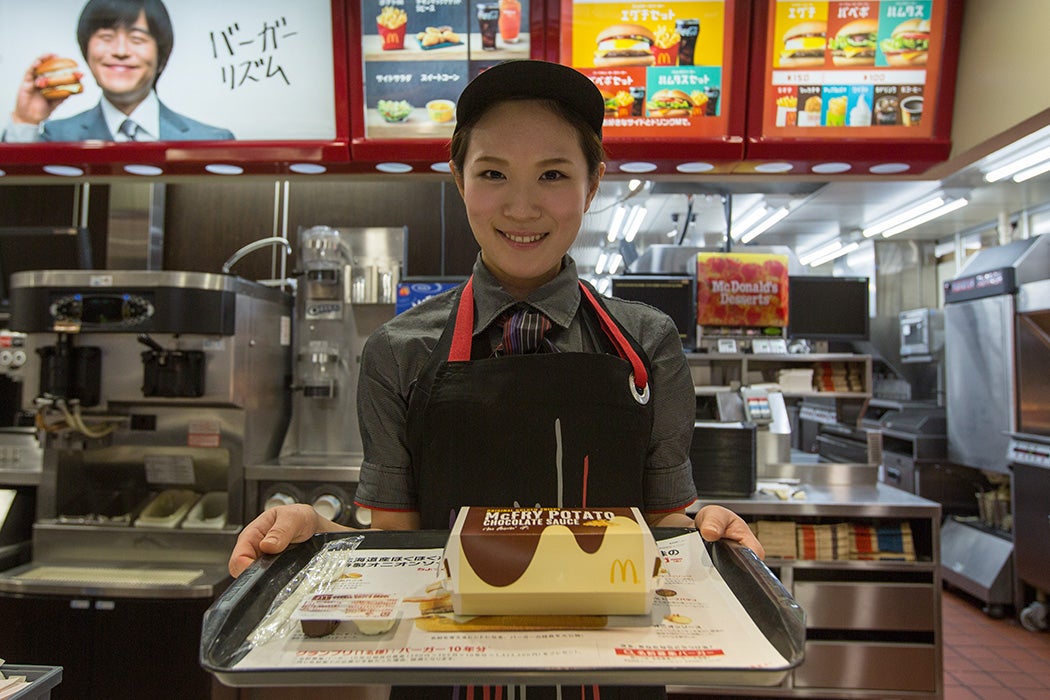
The connection between globalization and McDonald’s is a tale of scholarly metonymy. There’s no textual shortage of evidence that references the now-global fast food chain’s success in other countries , often linking it to themes of self-sufficiency, post-industrial stability, and democracy-formed capitalism.

Among these chunks of research is a more endogenous angle that examines the impact McDonald’s has had within offshore cultures; namely, how the American fast food model has been diffused across different countries. Such case studies, which look at individual cultural phenomena and their direct applications to globalization activity, refines not only the framework of McDonald’s in theories, but overall globalization processes and strategies as well.
Japan’s stylish renditions of fast food practices, for one, existed long before McDonald’s came to the country. Given the existing popularity of convenient and on-the-go meals—including conveyor belt sushi and street vendor meals—American fast food chains were bound to succeed. Scholars John W. Traphagan and L. Keith Brown investigate this supposition by employing an ethnographic model of research, building the argument that Japan not only assimilated—but basically swallowed whole—the McDonald’s dining model , to the point that younger people especially believe McDonald’s is a Japanese company.
Traphagan and Brown emphasize that, rather than “styles of preparation or ingredients,” fast food is defined by “a style of selling food.” Essentially, McDonald’s brought no real paradigm shifts to Japan—but rather constructed a space in which already-formed Japanese cultural practices could continue.
Their case study contrasts with that of geographers Ray Oldakowski and John McEwen, who similarly investigate McDonald’s and its cultural assimilation—but in Ecuador. Their evidence shows that the integration of American fast food dining followed a different path , and McDonald’s remains an obviously foreign establishment in the cityscape. McDonald’s didn’t attempt to adapt to Japanese or Ecuadorian culture (for McDonald’s, “the strategy has been one of consistency, i.e. McDonald’s prefers not to change its way of doing business to adapt to foreign cultures, rather, it changes local cultures to meet its own needs,” they note), but Ecuadorians clearly viewed the fast food chain as a deviation from local tastes, unlike Japanese consumers.
“[A] comparison of exterior designs revealed that the McDonald’s in Guayaquil [Ecuador] were very similar to the typical McDonald’s restaurants in the United States,” write the authors. Moreover, the menus were also similar. Only 2 percent of those polled considered the food served at McDonald’s similar to Ecuadorian food. In contrast, very few interviewees considered Kentucky Fried Chicken—another American fast food establishment—different from Ecuadorian food. Eighty-four percent reported that KFC was the most similar to Ecuadorian food, and 68 percent said it was actually where they dined regularly.
Weekly Newsletter
Get your fix of JSTOR Daily’s best stories in your inbox each Thursday.
Privacy Policy Contact Us You may unsubscribe at any time by clicking on the provided link on any marketing message.
“Those results suggest that McDonald’s might gain new customers, and more visits from existing customers, if they also offered menu items more typical of Ecuadorian food,” conclude the authors.
In neither Japan nor Ecuador did McDonald’s actively work to adapt itself to the tastes of the host countries, but the depth of integration into local dining customs differed between the two nations. Such observations could prompt additional nation-specific analyses and possibly reveal additional adaptations to the “strategy of consistency” associated with McDonald’s. However, the study of the globalization of fast food from a micro-cultural angle requires challenging assumptive attitudes around American businesses and classical theories, with one of the most popular—and infamously controvertible—examples being the Golden Arches Theory of Conflict Prevention , built on tropes of democratic peace through development. Globalization and its effects could also be examined in light of McDonald’s cultural impacts on its origin country of America, opening a conversation on socio-economics and class .
Support JSTOR Daily! Join our new membership program on Patreon today.

JSTOR is a digital library for scholars, researchers, and students. JSTOR Daily readers can access the original research behind our articles for free on JSTOR.
Get Our Newsletter
More stories.

Who Patented Patent Leather?
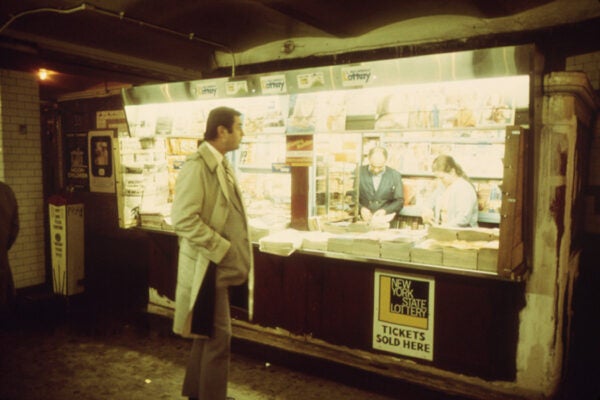
The Numbers vs. the Lottery

The Georgia Peach: A Labor History
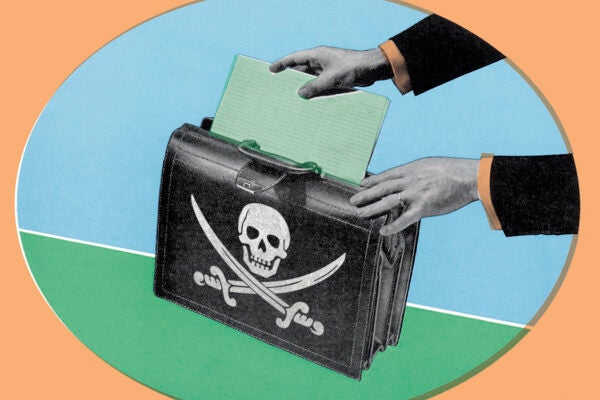
Modern Piracy: Arbitration as Plunder
Recent posts.
- Endangered: North American Cricket
- Monastic Chant: Praising God Out Loud
- The Scientists, the Engineers, and the Water Wheel
- Reclaiming a Coal Town
- Printing Anarchy
Support JSTOR Daily
Sign up for our weekly newsletter.
- Work & Careers
- Life & Arts
McDonald’s and its challenges worldwide: a market-by-market look
To read this article for free, register now.
Once registered, you can: • Read free articles • Get our Editor's Digest and other newsletters • Follow topics and set up personalised events • Access Alphaville: our popular markets and finance blog
Explore more offers.
Then $75 per month. Complete digital access to quality FT journalism. Cancel anytime during your trial.
FT Digital Edition
Today's FT newspaper for easy reading on any device. This does not include ft.com or FT App access.
- Global news & analysis
- Expert opinion
Standard Digital
Essential digital access to quality FT journalism on any device. Pay a year upfront and save 20%.
- FT App on Android & iOS
- FT Edit app
- FirstFT: the day's biggest stories
- 20+ curated newsletters
- Follow topics & set alerts with myFT
- FT Videos & Podcasts
Terms & Conditions apply
Explore our full range of subscriptions.
Why the ft.
See why over a million readers pay to read the Financial Times.
Solutions Menu
Understand a changing market, build winning strategies.
- Innovate to Grow Penetration, Share and Profit
Optimize Current Activities
Trends & foresight.
How do you identify the drivers of change and prioritize opportunities?
Jobs To Be Done
How can your brand more effectively help consumers to achieve their goals?
Customer Journey
Where are there opportunities to optimize how consumers buy and use your brand?
Demand Space
How can your brand more effectively address consumers’ underlying needs?
Co-Creation
How can ideating with consumers lead to more relevant and interesting ideas?
Innovation Sprints
How can a guided, short-term burst of creativity engage your team and refresh your innovation pipeline?
Innovation Testing
How can technology transform the experience of testing and optimizing every kind of innovation?
Winning At Shelf
How can you optimize every element of how you show up in retail?
How do you optimize your product or service?
Innovation Tracking
How can you achieve real-time tracking of your innovations and competitive innovations?
Brand Tracking
How do you keep your finger on the pulse of your category, your brand, and your competitors?
- Who We Help
Health and Beauty
Claims testing, pack testing, pack development, and more.
Portfolio optimization, pack testing, flavor testing, and more.
Menu testing, menu development, flavor testing, and more.
Portfolio optimization, claims testing, promotions testing, and more.
Build A Program
EmpytMenuItem
Trends and foresight, customer journey, demand space, co-creation sessions, innovation sprints, innovate to grow penetration, share, and profit, winning at shelf, brand tracking.
Case Studies
Get In Touch
Case Studies /
How we helped McDonald’s become famous for chicken

Industry projections showed global growth in the chicken category for 2021-2026. While McDonald’s boasts several iconic chicken menu items, they wanted to understand how to innovate (with chicken) in a way that was consumer relevant and brand relevant.
We worked with McDonald’s to understand the QSR industry landscape (and how chicken plays a role), assess McDonald’s global brand in chicken, and identify the optimal menu offering going forwards.
Based on our work together, McDonald’s was able to identify short-term innovation opportunities and long-term innovation opportunities. Innovations were prioritized based on their consumer appeal, their fit with the McDonald’s brand and their ability to grow the McDonald’s customer base.

McDonald’s is the world’s largest fast food restaurant chain, serving over 69 million customers daily in over 100 countries in more than 40,000 outlets as of 2021.
The Client & Challenge
We’re all familiar with McDonald’s – they serve millions of people across the world every week. And while they have several staples on their menu – items they’re well-loved and renowned for – they’re always looking for ways to better serve their customers.
Knowing that there is growing opportunity to capture a piece of the chicken market meant that McDonald’s needed to understand where to go next with their global menu. They needed a partner to assess the landscape, look specifically at their roster of menu items, and pinpoint where exactly innovation could take them.
The Solution
Dig Insights and McDonald’s partnered on a multi-phase consumer insight engagement to:
- Understand the QSR landscape in chicken
- Assess McDonald’s global brand in chicken
- Identify the optimal McDonald’s menu that includes chicken innovation
Focusing just on this third stage of identifying the optimal McDonald’s menu that includes chicken innovation, several business questions needed to be addressed:
- How do spicy options perform?
- How incremental are other chicken items on their menu?
- What is the role of the Chicken Big Mac on their menu?
- How can they add a premium chicken sandwich to their menu without cannibalizing their current offering?
To answer these questions, the Dig Insights team leaned on our platform, Upsiide. The gamified, intuitive Upsiide consumer interfaces allowed us to test up to 50 in-market menu items and potential new menu items against each other. This revealed key insights such as:
- McDonald’s is not primarily thought of as a chicken QSR, but it has several chicken menu items that perform on par with offerings from chicken-focused QSR brands.
- Chicken tenders are a popular innovation from McDonald’s, but projected loyalty is weak. This identifies a need to make chicken tenders more unique and compelling (potentially with the addition of unique dips)
- Grilled chicken and bone in chicken are a poor fit with the McDonald’s brand
- The Chicken Big Mac does not have the broadest appeal, but there is a group of consumers who find it highly compelling. This will help it to break through in market. Moreover, this innovation is incremental vs. the Big Mac, which helps the Chicken Big Mac to drive overall growth for McDonald’s
- The Chicken Big Mac was identified as an ideal Limited Time Offer. When tested on Upsiide, the McDonald’s team discovered the innovation idea has a relatively narrow appeal (ie. niche) but a committed group of consumers who are very excited to try it. This commitment will translate into the in-market buzz we want to see with a limited time offer (LTO).
- McCrispy was identified as a winning idea that is clearly positioned as a premium chicken sandwich.
The Outcome
The work that Dig Insights carried out allowed the McDonald’s team to build out a holistic menu that could flex based on geography and that answered key questions like:
Which innovations make the most sense for our brand?
What number of menu items should be offered?
What is the best combination of menu items to maximize reach?
The McCrispy launched as a global permanent menu innovation and is already a multi-billion dollar item. The team walked away with a path forwards to stand out within the QSR chicken space.
“Dig has become an invaluable partner across so many aspects of our business – and especially for our global team. We’ve worked with Dig on some of our most pressing and strategic customer problems to solve and they truly partner in finding real, workable solutions that connect insight to strategy. Dig goes beyond giving us the data and even the ‘why’, they are our partners in the ‘so what’ for our business.
We had the opportunity to partner on global menu research that supported a unified, global perspective on our chicken portfolio of products. They were critical partners in helping us craft a compelling story, grounded in data and human truths, to support our recommendations to our Senior Leaders.”
Customer Experience Insights Manager , McDonald's
Related Posts

Order up: trends in QSR & what’s driving change
Events , Industry Insights , QSR
Grab yourself a breakfast sandwich from your fast food restaurant of choice and watch this event on-demand as we walk you through the results of our latest study on QSR ordering trends.

A look at the food delivery category: trends & opportunities
Events , Food & Bev , Industry Insights , QSR
In this event, we’re sharing the findings from our brand-new research on grocery, restaurant and meal kit delivery.

How La-Z-Boy transformed their brand by leaning into laziness
La-Z-Boy worked with Dig’s qualitative researchers to develop and refresh their new brand platform, Long Live The Lazy!
Whether you’ve got a specific project in mind, or you’d like to learn more – we’d love to hear from you.
- Harvard Business School →
- Faculty & Research →
- October 1992 (Revised September 1996)
- HBS Case Collection
McDonald's Corporation
- Format: Print
- | Pages: 22
About The Author
Joshua D. Margolis
Related work.
- October 2002 (Revised June 2005)
- Faculty Research
McDonald's Corporation (Abridged)
- McDonald's Corporation (Abridged)

How McDonald's Became The Benchmark For Fast Food
Table of contents.
The McDonald brothers developed a system to make it all happen. Yet we know them for Ray Kroc, who created one of the world's largest chains of restaurants, real estate and toy retailers, while 'outmaneuvering' the founders.
Although McDonald's has not been the largest fast-food chain in the world since 2011, it is still the best-known brand. Even in Israel's Negev Desert, 100 kilometers from the nearest city, there is a restaurant, because franchising has given the company such a huge boost worldwide.

A few key facts about McDonald’s:
- The Kellogg Company was founded in 1940.
- McDonald’s and its franchise partners employ more than 200,000 people globally.
- McDonald’s reported $8.1 billion in sales by corporate-owned restaurants and $10.7 billion by franchise partners .
- The gross profit in 2020 was $4.7 billion .
- Global comparable sales decreased 7.7% in 2020 , mainly due to the COVID-19 pandemic.
- McDonald’s spent over $100 million on the international markets to boost marketing in hope of recovery.
- McDonald's operates more than 39,198 restaurants in more than 100 countries around the world .
{{cta('eed3a6a3-0c12-4c96-9964-ac5329a94a27')}}
You Don’t Sell Burgers! It’s A Real-Estate Business!
The first burgers.
Richard (Dick) and Maurice (Mac) McDonald opened their first diner together, a hot dog stands in Monrovia, California, in 1937. Later, in 1940, they moved to nearby San Bernardino and opened McDonald's Bar-B-Que. Over time, the eatery became more popular and profitable, but the brothers realized they could cut a lot of costs if they rethought their concept. They developed a series of revolutionary ideas and strategic measures that proved to be closely linked: reducing the range of products, preparing ingredients properly, keeping potatoes warm with an infrared lamp, and building a kitchen where food could be prepared more quickly. They also encourage people to take their orders and target families rather than young people.
In 1948, the McDonald brothers closed a well-established restaurant and reopened it a few months later with a slimmed-down menu - and by then under the McDonald's name. They realized that most of their income came from selling burgers, so they reduced the selection to almost nothing. (To give you the full picture, the fries and milkshakes were replaced with French fries and patties for a short time.)
Effectiveness above all
Kitchen work was sped up by having only two things to bake. Washing up was also kept to a minimum, as the food was served in disposable packaging. In 1952, the restaurant was closed again for several months to remodel the kitchen so that food could be served more quickly and efficiently than before. The new kitchen and associated system allowed all orders to be filled in as little as half a minute. Since the operation was supported by the "fast system," it's not hard to guess where the term "fast food" came from.
McDonald's goal at the time was to get people to store there, but not to eat there, but to take something there. This was achieved not only by the packaging of the products but also by the fact that there was no built-in canteen in the first restaurant; if you did not want to take what you bought home with you, you could either eat your lunch in your car or sit on a bench nearby. For a while, they also experimented with serving drinks in cone-shaped cups that customers could not put down, which encouraged them to eat faster.
Thanks to this incredibly efficient and fast operation, they were able to sell burgers for 15 cents - about half the price of other places. The fast service, consistent quality, and low price amply compensated customers for the inconvenience. Soon, the McDonald brothers wanted to open more restaurants, but they were not nearly as successful as their first location. The reason was simple: they could not be everywhere; they could only be personally responsible for quality assurance at the first restaurant. At the same time, the oldest McDonald's still in operation today opened in Downey, California.
The arrival of Ray Kroc

The brothers realized that they did not necessarily have to open new locations themselves to expand, but that others would do it for them. So in 1948, they began to reform their business model and set up a franchise system. By 1954, they had sold the royalties from 21 franchises.
1954 marked a turning point in the McDonald brothers' lives. To further speed up service, they ordered a new type of mixer that could ensure the preparation of multiple servings at once. The order put them in contact with Ray Kroc, a travel agent. Kroc was amazed at how efficiently the restaurant operated. He wanted to get into the business and eventually convinced the brothers to make him their franchise representative. From then on, he was in charge of who and where they could open new restaurants.
The new buildings were now built the way the McDonald brothers envisioned their dream restaurant. A clean, red and white exterior with a neon yellow golden arch on either side of the building attracts potential clients (aka bypassers) to the restaurant. The juxtaposition of these two golden arches became the familiar Meki logo, which also forms an "M," a reference to the initials of their name. It took on a similar look to today's image after Ray Kroc became the owner, or rather founder, of the company.
In 1955, Kroc founded the forerunner of today's McDonald's Corporation (McDonald's System, Inc.) and opened its first new restaurant. The first was followed by the second, the third, and within a year, the 18th. Kroc was entitled to 1.9% of gross sales for each of these restaurants, but under his agreement with the brothers, they were entitled to 0.5%. He could barely cover his expenses with the remaining amount. Then he met Harry Sonnenborn, who gave him a new perspective: McDonald's was in fact a huge real estate business.
Turn of events
Sonnenborn encouraged Kroc to buy the land on which he wanted to build restaurants and then lease it to operators. Kroc listened to him and took the biggest step toward owning the entire chain. This way, he received a steady stream of income and did not have to give any of it to the McDonald brothers. The latter, of course, was not happy about this situation. Everything in the restaurants had to continue to be done the way the brothers wanted, although Kroc tried to introduce several innovations. Finally, in 1961, Kroc bought out the brothers for $2.7 million. To raise this sum, he had to take out loans, 14 million of which he was later able to repay.
Years of rapid expansion
As part of the agreement, the brothers would continue to own the restaurant in San Bernardino, but they had to change the name because Kroc already owned the naming rights to McDonald's. So they continued to run the restaurant under the name "The Big M," but Kroc was upset that he could not have it. Soon after, he opened a Meki just around the corner from the M, which allowed the McDonald brothers to close the location in a few years. They probably regretted the deal for life, because, with their 0.5% share at the time, it would have guaranteed them $15 million a year until the late 1970s, while their heirs would have received $305 million in 2012. And Kroc probably got a good deal on that loan.
By 1965, the company was operating more than 700 restaurants. That year, they went public. McDonald's stock started at $22 a share, but within a week the price had risen to $49. By the end of the decade, they had 1,500 restaurants worldwide and has started at Sonnenborn's suggestion, they continued to own the land on which the Meccas operated. Now they are looking for new land with fairly high standards: it should be about 4,600 m2, with the possibility of building on 370 m2, and located on the corner of at least one, but preferably two, busy roads.
Also in 1965, the then very limited offer was expanded: the Filet-O-Fish sandwich was added to the national menu. The fish burger was invented to give Catholic customers a choice during Lent. In 1968, the Big Mac, the iconic double-decker burger, was introduced. The Egg Muffin was introduced in 1975, the Happy Meal in 1979, and Chicken McNuggets in 1983. Of these, the Happy Meal is perhaps the most interesting, as it has made McDonald's one of the largest toy sellers in the world: 1.5 billion toys are sold each year thanks to the Happy Meal.
Ray Kroc never stopped working for McDonald's until he died on January 14, 1984. To this day, McDonald's provides its customers with great-tasting, affordable food, franchisees and crew members with job opportunities, and suppliers with reliable ingredients and products.
Key takeaways
Successful market penetration does not always require a complete upheaval of the rules of the sector. The McDonald brothers did not invent any truly new dishes, but they did let awareness guide the design of their restaurants. So the number-one success factor for McDonald's is professional design and process management.
The second success factor is sales behavior. While other restaurants were slower to offer their products, the excellent policies encouraged employees to sell customers as many extras as possible. Even today, "go big" accounts for a significant portion of restaurant profits (industry rumors say 40%).
The third approach is the real estate-based approach. The franchising system that Ray Kroc perfected is still used today, and we know from the annual report that the company makes more revenue from franchisees than it can generate itself.
The McDonald’s Products
Core products.
.jpg)
McDonald's core products include burgers, which typically consist of a slice of beef, cheese, and sauce sandwiched between two halves of a bun - in all combinations and sizes. The smallest product is the standard burger, while the largest is the Big Mac. The sandwiches are available with chicken and fish, as well as localized versions in many countries around the world.
Core products include French fries, which also come in a variety of sizes. In addition, the Happy Meal menu specifically for children, as well as shakes and soft drinks, continue to be an integral part of fast food restaurant menus in almost all countries. According to market research , an average McDonald’s menu includes around 145 items.
Seasonal products
National holidays, Halloween, Christmas, or even Easter - whatever the occasion, McDonald's introduces new seasonal products every month in every country around the world. Some are country- or region-specific (for example, the foie gras sandwiches are made specifically for the European audience), but most products are available in other countries after a limited local testing period.
Typically, a traditional product, such as a standard burger, is enhanced with additional ingredients (e.g., spices, additional meat, or a special design) to reflect the seasonal event.
Localized products
McDonald’s has achieved this global success through maximizing localization techniques and appealing to local audiences. The company manages the menus to fit culturally and socially accepted norms; tailoring their traditional Big Mac meals to suit a local audience with specific requirements.
- Argentina: McFiesta burgers are available at McDonald's restaurants in Argentina, which are quarter pounders with mayo instead of ketchup. There are typical US sides here like French fries and Coca-Cola. Consider getting ice cream in an Oreo cone for dessert.
- France: Typically, you'd find the McBaguette combo at Mcdonald's in France - a sandwich that is topped with two hash browns and includes breaded chicken, ham, and cheese. The 'Le McWrap' and the 'Le Menu Happy Meal' are also available. Try their apricot and lime macarons for dessert, or their cherry tomatoes as a side dish.
- Hungary: In Hungary, specialized seasonal menus are very common, both in terms of ingredients and appearance. This is also facilitated by the fact that, since 2019, Hungarian McDonald's restaurants have been managed by a centralized, Hungarian-owned company, while the American McDonald's company provides only the brand and franchise rights. Foie gras is a regular item on Hungarian menus, as is "Dotted McFlurry" (a cottage cheese-based ice cream) made in cooperation with a very popular local dairy supplier.
- India: McDonald's has created the Maharaja Mac by substituting chicken patties for the traditional beef patties in its Big Macs. In India, cows are regarded as sacred animals, thus the reasoning behind this change. Indians also enjoy the Vegetable Pizza McPuff, a unique side dish. However, fries and Coca-Cola are just as popular here as they are everywhere else.
.jpg)
- Middle East: Specifically for Middle East dining, Mcdonald's has created the McArabia Pita, which is served with beef or chicken patties (pork is not allowed in the predominantly Muslim diet), onions, and tahini sauce.
- New Zealand: Despite being removed from the permanent McDonald's menu in New Zealand, the 'Georgie Pie' is still available in some restaurants. With fries and frozen Coke, a square pie topped with steak and cheese is served.
- Sweden: Scandinavian countries tend to favor healthy diets, especially vegetarian food. McDonald's capitalizes on localization with its vegetarian McBean Patty. Served in a bun with lettuce, tomato, and sauce, it has cannellini and kidney beans, onions, green peppers, and carrots.
- Thailand: There is a Samurai Pork Burger on Thailand's national McDonald's menu, which is a pork patty dipped in teriyaki sauce with lettuce, onions, tomato, and mayonnaise. Besides the usual apple pie, you'll also find corn and pineapple pies that aren't available anywhere else.
Partnerships with other companies
- Coca-Cola: The story of McDonald's and Coca-Cola began in 1955 when the fast-food restaurant was looking for a soft drink supplier. The partnership has continued ever since, with Coca-Cola selling not only soda but also other products to the restaurant chain.
- Oreo: Oreo is a worldwide popular dessert brand that mainly produces biscuits. The filled biscuits have become so popular that McDonald's has become a major supplier of Oreo to Mondelez International. In most countries, the biscuit pieces are served with ice cream, but in 2019, McDonald's China team tested the market with a burger with spam and Oreo biscuits . (It was not a global hit.)
- Beyond Meat: The trend toward vegetarian diets is spreading like wildfire around the world, and McDonald's is no stranger to it. According to the BBC , the McPlant burger will be available in British and Irish outlets as early as next year. The beef patty, made with pea protein, is available in 10 restaurants in Coventry, England, in the first round since the end of September, and then throughout the United Kingdom next year. The product's main ingredient is made for McDonald's by Beyond Meat, a publicly-traded startup.
- Local suppliers: Whether we're talking about the US or any other country in the world, one of McDonald's main and most forward-thinking efforts is to source its ingredients from local suppliers. To ensure that the fish, meat, or burger bun is always made to the same standard, McDonald's applies incredibly strict and centralized guidelines.
Healthy or not healthy?
The restaurant chain has made great strides in the area of healthy eating in recent years: think supply chain with only local suppliers or the introduction of gluten-free, lactose-free, and vegetarian options. The calorie content of a hamburger today is much lower than that of a burger from 1980. In addition, the McDonald's team places great emphasis on healthy living - and they are trying to recruit new colleagues who will promote this corporate image. But that's just one side of the big picture.
A very interesting post came to light in 2008 when Karen Hanrahan revealed a shocking picture. Out of curiosity, she had set aside a McDonald's burger she bought in 1996 to see how quickly it would disintegrate (since there were theories about "plastic" foods in the past). After 12 years, the burger looked exactly like the one she had just bought, except it had shrunk a bit.
Although this is not part of the company's strategy, the following sources have been criticized the company:
- Jamie Oliver and his legal battle against the company
- Super Size Me , a movie in which the protagonist eats only McDonald’s products
- In 1986, Greenpeace distributed flyers against obesity, naming McDonald’s among the ones responsible.
- There are also a lot of myths (most of them already busted) around the company’s procedures and products.

The product portfolio is the company's strength, so it's no wonder McDonald's is constantly improving and perfecting its recipes. Although the company has yet to build its healthy food image, its fast service and delicious, robust flavors win over millions of customers every month.
The range includes flagship products available in all restaurants (except were banned for religious or legal reasons). These include traditional burgers, fries, and cola.
The company also diversifies its menu with seasonal and localized items. In the latter category, offerings vary from country to country and region to region, usually in partnership with local businesses and brands.
Franchise System
What is a franchise system.
Franchising has spread throughout the world not as a separate form of business, but as a special kind of business.
Franchising is a form of business based on close cooperation in which the franchisor or the owner of the system sells a complex system that has been carefully designed professionally and commercially in every respect and successfully tested in a market environment. The system is handed over to the franchisee with full training, branding, and ongoing support and supervision. Franchisors operate the franchise system to the specifications of the transferor, in the agreed territory, for a fee, for a fixed period.
.jpg)
McDonald’s Franchise Costs & Requirements
When purchasing an existing restaurant or a new restaurant, an initial down payment of 40% is required. Down payments must be made from non-borrowed personal resources, such as:
- cash on hand
- vested profit sharing
- business or real estate equity
The down payment amount will vary depending on the total cost of the restaurant. McDonald's generally requires $500,000 of non-borrowed personal resources before considering a new franchise partner. With less cash available, most opportunities to participate in the program are limited and depending on the transaction's specifics, financial requirements may be much higher. Additional or multi-restaurant opportunities may be more available to those with additional funds.
Franchise financing
To purchase a McDonald's restaurant, the buyer must pay a down payment of at least 25% cash. It is possible to finance the remainder of the purchase price for a period of up to seven years. Although McDonald's does not offer funding the project, McDonald's Owners/Operators benefit from established relationships with many national lenders.
Franchise - Ongoing Fees
- Service fee: Currently, a service fee of 4.0% of monthly sales is based on the restaurant's sales performance.
- Rent: Rent that is based on a percentage of sales monthly.
Other costs of setting up a new franchise
Costs usually range from $1,2 million to $2,2 million. Most of the costs are related to the construction of the restaurant, such as building and interior design, but the franchisee also pays for equipment, furniture, and kitchen appliances.
General franchising strategy in 2021
McDonald's restaurants provide quality food and beverages in 119 countries, which are franchised and operated by the company. At year-end 2020, McDonald's will have 39,198 restaurants, of which 36,521 are franchised, or 93 percent.
McDonald's franchise restaurants fall into one of the following categories: conventional franchises, development licenses, and affiliates. Optimal ownership structures for restaurants, trading areas, and markets (countries) depend on a variety of factors, including financial resources and entrepreneurial abilities, as well as legal and regulatory frameworks in key areas such as property ownership and franchising. McDonald's business relationship with independent franchisees is governed by standards and policies, which are of fundamental importance to the company's performance as well as its brand protection.
McDonald's franchise partners are not financial investors, but committed partners who not only put up the capital to open a restaurant, but are also willing to participate in the day-to-day operations and running of the restaurant. They know all the ins and outs of the business, but they also reinforce the McDonald's brand through their involvement in the local community.
The potential partner does not have to have a suitable location, as the location of the restaurants is always determined by the company and handed over to the franchisee.
The Company’s Old/New Strategies
Accelerating the Arches is the Company's new growth strategy for 2020. As the leading global omnichannel restaurant brand, McDonald's Strategy encompasses all aspects of the company's business as well as updated values and new growth pillars that leverage the company's competitive advantage.
Growth Pillars
- Marketing: Investing in new, culturally relevant marketing approaches to effectively communicate the brand's story, food, and purpose. Customers will be provided with more personal services through enhanced digital capabilities.
- Products: Focusing on serving delicious burgers, chicken, and coffee. Chicken and beef will be the company's primary focus as they represent the largest growth opportunities. McCafe’s brand, experience, value, and quality will be leveraged by the markets to drive long-term growth for McDonald's.
- Digital, Delivery, and Drive-Thru: McDonald's plans to accelerate technology innovation to meet the needs of customers as they interact with the company.
- Digital Experience: Known as "MyMcDonald's", the new digital experience platform will transform the company's digital offerings across drive-thru, takeaway, delivery, curbside pickup, and dine-in options. Through the digital tools available on the platform, customers will receive tailored offers, will be able to enroll in a new loyalty program, and will have the option to order and receive McDonald's food using their preferred channel.
- Delivery expansion: McDonald's has expanded its delivery service to nearly 30,000 restaurants in the last three years and plans to expand further.
- The increasing importance of Drive-Thru: More than 25,000 restaurants globally have drive-thrus, including nearly 95% of the over 13,000 in the U.S. This channel has gained in importance since the COVID-19 outbreak, and leadership expects that it will play an even greater role as customers demand more flexibility and choice. In the U.S. and International Operated Markets, the vast majority of new restaurants will have a drive-thru. In addition to automated order taking, the Company plans to test a drive-thru express pick-up lane for customers with digital orders and a restaurant concept that offers drive-thru, delivery, and takeaway only for customers to enjoy a faster and more convenient experience.
For decades, McDonald's sales efforts focused on the cash register and drive-thru. One of the strongest elements of this was the introduction of the "Go Large" theme. By sizing and pricing the products, even those who had no real need chose the largest product, believing it to be the best and most appropriate offering.
Today, in addition to physical sales, digital sales have become a priority. An app developed by the company not only speeds up the ordering process but also offers additional discounts that can further increase the cart value per customer.
With the introduction of home delivery, McDonald's has begun working with several partners including UberEats, FoodPanda, and Wolt. For a long time, these online marketplaces did not offer fast food products like McDonald's, but they have now become serious players in the market. The company's offering is particularly strong when it comes to speed: on average, food is delivered in 15-20 minutes, compared to 50-80 minutes for a traditional restaurant.
There are several cornerstones of the company's marketing strategy that have contributed greatly to McDonald's success:
- The Ronald McDonald figure: An owner of a McDonald's franchise introduced Ronald McDonald in 1967. To appeal to children, franchise partners decided to use a clown icon as an advertising tool. 96% of American children knew the name Ronald McDonald by 1973. Ronald McDonald is the second most recognizable fictional character among US schoolchildren, behind Santa Claus.

- The McDonald’s logo: There's no doubt that McDonald's golden arches are one of the most recognizable logos in the world. It was created in 1940. During the '60s, McDonald's decided to simplify their logo and focus on branding the company. A brilliant move was choosing the golden arches as the logo for the fast-food restaurant. The McDonald's logo looks very much like two golden-brown French fries bent into a letter M, and this is one of the most effective design features of the logo. McDonald’s is advertising one of its most popular menu items without viewers even noticing it.
- “Para PaPa Paaaa… I’m lovin’ it”: McDonald's has been using this jingle for a very long time. McDonald's jingle highlights a positive dining experience. The musical theme makes the diners feel at home during their meals there, as well as conveys how friendly and helpful the staff is.
- Promotion campaigns: Television advertising has become a favorite field for all fast-food restaurants with the proliferation of TVs. To this day, McDonald's is a loyal advertiser on channels aimed at children and their parents. Its campaigns focus on delicious food, fun, natural ingredients, and health.
The company is one of the biggest innovators in the food industry and is credited with inventing or perfecting the following:
- McDonald's put in place order-taking kiosks in 2015, making it one of the first fast-food chains to do so. A touchscreen machine located near the front of restaurants lets customers place their orders without the need for a cashier.
- The introduction of specialty coffee at McDonald's changed McDonald's from a fast-food restaurant to something more. McDonald's introduced its specialty coffee line in mid-2007.
- The company separated a part of larger restaurants and re-branded it as McCaffes, a place where customers can buy coffee and desserts. Now it competes with Starbucks for coffee-lovers.
- McDonald's was one of the first fast-food chains to organize even the smallest details of its operations in a manual. This manual is still being improved today.
The 2020 growth plan contained nothing new compared to the path taken a year earlier. The key elements were digital customer access, which was a key driver of the company's continued growth during the COVID epidemic.
Sales and marketing go hand in hand at McDonald's: over the past 80-plus years, the techniques used have been perfected, all aimed at getting customers to buy. Advertising builds on this image of cheap and healthy food.
Final Thoughts And Key Takeaways
Growth by the numbers.
McDonald's has seen steady growth since its founding. Because of the relative cheapness of its products, it is a truly crisis-proof company, which even COVID could not bring to its knees - unlike millions of small catering businesses.
The company has emerged from the crisis as a winner, thanks in particular to digital developments, drive-thru, and the spread of home delivery.
|
|
|
|
|
| $4.73 billion | $4.53 billion |
| Number of restaurants | 39,198 | 36,525 |
|
| 200,000 | 420,000 |
| Cash and equivalents | $3.45 billion | $7.68 billion |
Key takeaways from the McDonald’s story:
- Real estate business: The McDonald's business model has evolved from a restaurant to a complex system in a relatively short period, with some revenue coming from franchise fees, some from land leases, and some from food sales.
- Thoughtful processes: While other restaurants are constantly experimenting with food, McDonald's has focused on improving its production technologies from the beginning. In addition to innovative machinery, internal processes have also been organized to ensure that products reach customers as quickly and consistently as possible.
- Franchise system: Behind the amazingly dynamic growth of McDonald's has been a well-constructed franchise system, the foundations of which were laid by the McDonald brothers, but perfected by Ray Kroc.
- Core, seasonal and localized products: The main feature of the company's product range is that it is extremely consistent, as we can also get fries and cola in the farthest corners of the world. At the same time, local companies, at their discretion, can launch the menu with seasonal and localized products, enabling them to engage their customers even more.
- Strong marketing: Mcdonald’s has consciously built up the dining experience - regardless of whether we’re eating a hamburger in the car, in a restaurant, or at home. The logo, the iconic clown figure, the company’s theme song, the packaging, the internal design, and many other elements add up to become an unforgettable experience.
- Home delivery: Delivery was the largest innovational step from McDonald’s for decades, and partnering with food delivery startups, like UberEats or Wolt helped the company not only to survive the pandemic but get in shape for rapid growth.
Consumer opinion on McDonald's is certainly divided: some say it's plastic, others say it has grown up to meet consumer expectations. As a publicly-traded company, the owner of the golden arch has no choice but to march forward, pioneering innovation as it has throughout its history. What does the future hold for the company? An even broader product range, a stronger home, and digital experience - and, investors expect, continued revenue growth.
- HR Strategy
- Diversity, Equity, Inclusion, and Belonging
- People Analytics
- Talent Acquisition
- Learning & Development

- Business Transformation
- HR Effectiveness
- Rewards and Benefits
- Event Calendar
- HRD Collective
- HRD Collective Europe
- Case Studies
- HRD Live Podcast
- HRD Network
- HRD Buyers Guide
- Global Advisory Board
Content Calendar
Connect with us, inside 'mchire': how ai reduced mcdonald's time-to-hire by 65%.
by HRD Connect | Case Studies

- Date published: Mar 20, 2023
- Digital Transformation
Artificial intelligence (AI) is transforming the world of business at an unprecedented rate. This technology is revolutionizing the future of work, from recruitment and employee engagement to learning and development. Indeed, despite the recent spike in popularity largely thanks to the public launch of ChatGPT in November 2022, many organizations and industries are already reshaping their workflows with the help of artificial intelligence.
With a deep history in organizational innovation, it’s no surprise McDonald’s is at the front of the queue. In 2019, it rolled out talent hiring platform from Paradox, re-branded as McHire, to company-owned restaurants, and offered the platform as an optional program to franchisees in the US and Canada. It has since adapted McHire for the UK and Ireland. As many organizations only just begin to consider how generative AI could reshape their full employee lifecycle, McDonald’s restaurants in the UK and Ireland are already reaping the rewards.
Following the introduction of McHire, 1,450 McDonald’s restaurants in the UK and Ireland have seen:
- Time-to-hire reduced by nearly 65%
- A 20% increase in the number of candidates completing the process compared to the previous system
- 85.9% of surveyed candidates rated their experience as four out of five or five out of five. (December 2022)
- Three to five hours of time saved per recruiter per week
Richard Bainbridge, People Technology Lead at McDonald’s UK&I, is part of a team formed specifically for this type of digital transformation . He takes us through the McHire journey.
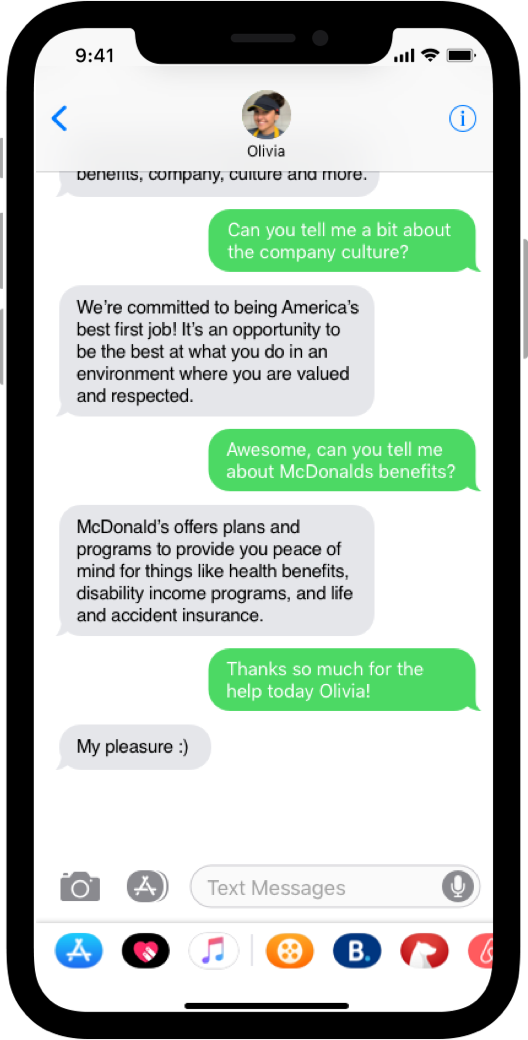
Meet McHire, McDonald’s AI hiring platform
McHire is a talent-hiring platform that leverages conversational AI to create a shorter and more engaging candidate experience. This experience is driven by a recruiting assistant that is live 24 hours a day and reframes the application process for prospective candidates applying for roles in a restaurant. Bainbridge explains a typical journey for an applicant to the fast-food chain.
“We wanted the initial contact to feel engaging and conversational and not like filling out a traditional application form. When a candidate reaches out to register an interest in a vacant role, the AI assistant, Olivia, jumps in. It asks a number of pre-screening questions and gathers information and data on the candidate. They complete an interactive assessment that populates the application form. The system assesses their suitability for the role, and if successful, they are automatically set up for an interview at the restaurant they are applying for.
“It’s a much simpler, quicker, and easier process that’s more enjoyable for the applicant. And that was our thinking throughout, we wanted to ensure we were candidate-centric in our thinking while supporting our restaurant recruiters.”
McHire is a significant change to McDonald’s UK&I prior model for talent acquisition, having introduced its last system a number of years ago. It has seen a significant improvement in hiring times, the number of candidates completing applications and overall candidate satisfaction. Following the roll-out of McHire, average time-to-hire has dropped by nearly 65%. Restaurants have also seen a 20% increase in the number of candidates fully completing the job application process. 85.9% of surveyed candidates rated their experience as four out of five or five out of five. (December 2022)

Navigating the AI vendor selection process
As with any HR vendor selection process, choosing the right partner is paramount. The first stage of this process is diagnosing the challenge the technology, tool, or vendor needs to solve. With over 200 franchisees, creating a clear picture of the organization’s needs was paramount. Alongside digital consultancy and partner Enfuse Group, McDonald’s invested a significant amount of time in creating a cross-functional team across the business, to understand restaurant and recruitment challenges. Bainbridge outlines the huge scope of stakeholders involved in this process.
“To understand the challenges for our restaurants and what they wanted to move away from was essential. We needed to make a system that would work for the entire business, so we pulled together members from all areas of the business, bringing together what we refer to internally as the ‘Three Legs of the Stool’ —franchisees, suppliers, and company employees. The teams included Talent Recruiters, People Managers, franchisees, HR, technology teams, legal teams, finance , cyber security, and data analysts, who all came together to help us define what we needed. It was a complete deep dive into the current process.”
McDonald’s and Enfuse Group used these insights to create a Request for Proposal (RFP), for potential suppliers to put forward their solutions. The RFP yielded eight different solutions that McDonald’s quickly whittled down to four options based on functionality. The cross-functional team met with each vendor to understand their product and how it could be customized to fit McDonald’s.
“There were three parts to this process. Understanding each vendor’s business and future thinking, vendor demonstrations, and an open question and answer session with the cross-functional team. We also held ‘Commercial Clarification Calls’ to ensure that the pricing and costs submitted were aligned to the needs of the business.”
This resulted in a decision paper, and updated Business Case, which outlined the process, scoring, and rationale before being approved. This best practice has since been incorporated into McDonald’s People Technology ways of working for the future.

The roll-out of McHire
The difference between the theoretical application and practical adoption of tools and software is an uncomfortable reality for HR leaders to face. Software gathers dust when organizations select the wrong tool, but also when implementation and training are ineffective. Indeed, another vital component of McDonald’s success with McHire was the adoption of the system.
“You can have the best solution, but if it’s not adopted well in the restaurants, then that causes even more frustration. The business has really embraced the system. They’ve told us it was the step change they needed to support their recruitment needs in what is an extremely challenging and competitive market.”
Alongside support materials from the AI vendor, McDonald’s took a personalized approach to training. Moreover, the creation of a test environment for restaurants was vital in ensuring the adoption of the technology.
Customized training and community development
McDonald’s curated in-person sessions for smaller groups to come together and begin learning how to use this technology. It personalized the sessions, allowing each stakeholder to access training highly relevant to their job role.
“We adapt the materials for different audiences. From a franchisee’s point of view, would they be in the finer detail of the recruitment system? No, and we wouldn’t expect them to be, but we did want to take them on the journey and for them to understand how this technology will impact their business and the benefits it will deliver. The People Managers and recruiters needed the details and finer training, given the role they play using the system day to day.”
“And for change on this scale, we feel there’s nothing better than face-to-face training. It was the first time after Covid-19 we were reverting to in-person, and it worked extremely well. We had great buy-in across the business. People could break out into smaller sessions and share their experiences. We delivered over 30 face-to-face sessions across the UK&I for over 2,000 users and created open forums for people to ask questions and share their experiences. It became a community that helped each other adopt the technology, with the project team on hand to support through webinars, where needed.”
Developing a test environment
These sessions also included access to a testing environment. Ahead of the go-live date, restaurants, and key employees were able to access a secure environment to explore the way McHire works. This was augmented with a pilot scheme of 29 restaurants that initially went live and processed real-life candidates.
“It let people become accustomed to the system and experience the application process. It helped them understand what it was like in practice and gave them a chance to test and feedback, so we had the time to implement any changes ahead of the full deployment.”
This test-based approach has continued since the release of McHire, to constantly iterate and improve the platform. To date, over twenty user-led enhancements have been successfully rolled out since its launch to an estate of 1,450 restaurants.
“Our approach now is to ensure we only implement systems that we can continue to evolve. Through our ongoing engagement with our franchisees and restaurant teams, we work to understand how we can continually improve, sharing our feedback with the supplier, and road mapping enhancements to make sure the technology continues to add the value our restaurant teams need.”
AI enables rather than replaces
Bainbridge also highlights the role the franchisees have played in adopting this technology. With the support of the McDonald’s UK&I People Team, AI has helped franchisees to tackle their hiring bottlenecks, from locating quality candidates to securing the right quantity of applicants in the pipeline.
“AI is an important enabler of achieving what our franchisees and recruiters need. However, AI on its own won’t guarantee the right outcomes. Rather it needs to be implemented holistically across people, processes, policy, and data. Each restaurant has its own specific challenges and needs and McHire was able to support this, whether that be a high-volume restaurant with high recruitment needs or a hard-to-hire location the system has been a great fit for all.”
The introduction of this technology has freed up time for the recruiting team to focus on adding value in other areas. McDonald’s estimates each recruiter has saved on average three to five hours of time per week. Recruiting leaders are reinvesting this time into training and onboarding new joiners to support retention and delivering a great customer experience.

Why McDonald’s created a People Technology team
To support the ever-increasing people technology portfolio and the introduction of McHire and future software implementations, McDonald’s created its first People Technology team in the UK and Ireland. Previously, this work spanned across two different functions, People and Technology.
This team owns the strategic direction of the portfolio while being aligned to business needs, whether that be recruitment, scheduling, HR, or engagement.
Within that work, the team covers various responsibilities, including:
- Project Management. This complex change for McDonald’s required working with six third-party systems and myriad deadlines. The PeopleTech team partnering with Enfuse Group ensured that all the dependencies were managed effectively, risks and issues were resolved, and decisions were quickly but carefully made to avoid delays to implementation.
- Design & Configuration. A key part of encouraging adoption was creating an intuitive and simple process. All team members came together to ensure that the design was candidate-centric.
- Change Management . With the prior solution dating back to 2007, this was a huge change for the restaurant teams. The PeopleTech team worked closely with Enfuse Group and their own Change Team to manage the planned change that was delivered against project goals.
- Transition to business-as-usual. Once live, McDonald’s needed to ensure that the rollout continued to be a success. The People Technology team worked with franchisees and restaurants to resolve any issues and implement any further changes.
“We needed a team of people who proudly have one foot in technology, and another in restaurant operations. The team guides the business and engages with our franchisees on their work and systems that would help them succeed.”
“The team has done a huge amount of work to engage with every user of the system through phone calls, webinars, and surveys to solicit feedback. That includes our franchisees, our recruiters, and our new hires that have come through the system. We’ve even spoken with people that have completed the process and haven’t been hired.”

Where next for AI at McDonald’s?
With McHire rolled out in the US and Canada, and the UK and Ireland, McDonald’s and some of its franchisees are now beginning to scale the use of AI for hiring and HR processes across the globe. The journey to create a customized model for McDonald’s UK and Ireland is informing this process.
“I’m proud to say that McHire is a global solution adopted across many markets. We’re feeding and supporting global teams with our thoughts, experience, and lessons learned. There’s a working group to make sure this knowledge is shared and to ensure the system is right for each market. That includes legalities but also how processes work in each location.”
Moreover, with a proven user case in the UK and Ireland, and a dedicated People Technology team, McDonald’s is now turning its attention to other areas of the employee lifecycle and considering the impact AI may have.
“We are now focused on the next stage of the candidate journey, their onboarding experience. We are exploring how AI can support here, from the welcome meeting through to celebrating their first day and anniversary with us. There is clearly a huge amount of potential to explore here, and I’m looking forward to continuing to unlock it.”
Subscribe to get your daily business insights

Related Articles

Adjusting change management models to cope with rapid digital transformation
[powerpress] As we dive headlong into a future of work characterized by rapid change and ongoing business transformation, are traditional and...
- Benjamin Broomfield


The new era of AI-powered recruitment
AI in recruitment, friend or foe? I started my recruitment career about 12 years ago when the Internet provider company I was working for as a...
- Oana Iordachescu

Overcoming common faults in the path to digitisation
In this new piece, HR thought leader and author Robin Speculand discusses some of the problems that organisations can face as they implement a...
- Robin Speculand

Virtual Summit roundup: Ericsson on digital change in organizations
Despite the recent disruption to organizations and professionals, digital change continues to race ahead in today's businesses. From augmented...
- HRD Connect

The 'Zoomification' of work: challenge or opportunity?
Since the dawn of the technological age, the man vs. machine debate has manifested in all walks of life; business, entertainment, transport and so...
- Sam Alberti

How gamification can unlock creativity and improve organisational performance
The Fourth Industrial Revolution (4IR) is a world of constant change, unprecedented economic and social challenges, interconnectivity, continuous...
- Professor Vlatka Hlupic

The impact of AI and automation on HR and the wider business
Contrary to common misconceptions about how AI will negatively impact the job landscape, there are many benefits that advancements in technology can...
- Louron Pratt

Where IT stops and HR steps in: how to ensure a smooth transition to new technologies
With customers demanding new and improved experiences, and competitors investing millions into the tools to deliver them, organisations have been...
- Megan Barbier
We sent a code to your email.
Enter the 6-digit verification code sent to
Stay connected to the global HR community

McDonald's Corporation: The World's Leading Fast Food Chain [Case Study]

Devashish Shrivastava , Anik Banerjee
McDonald's Corporation is an American fast-food organization established in 1940 as a café by Richard and Maurice McDonald, in San Bernardino, California, United States. They rechristened their business as a burger stand and later transformed the organization into an establishment; the Golden Arches logo being presented in 1953 at an area in Phoenix, Arizona.
Ray Kroc, a businessperson, joined the organization as an established operator in 1955 and continued to buy the chain from the McDonald's siblings. McDonald's had its base camp in Oak Brook, Illinois, and moved its worldwide base camp to Chicago in mid-2018.
McDonald's is worth $185+ bn today. It is the world's biggest eatery network by revenue. It was last registered to be serving 69+ million customers each day in more than 120 countries across over 39,000 outlets.
Although McDonald's is best known for its burgers, cheeseburgers, and french fries, its menu also includes chicken items, breakfast things, sodas, milkshakes, wraps, and sweets. In light of changing buyer tastes and a negative backfire on account of the wretchedness of its food, the organization has added mixed greens, fish, smoothies, and natural products to its offerings.
McDonald's Corporation's income originates from leases and charges paid by the franchisees. According to two reports distributed in 2018, McDonald's is the world's second-biggest private manager with 1.7 million representatives (behind Walmart with 2.3 million workers).
Here's bringing you the McDonald's company profile that will present to you McDonald's company overview, when was McDonald's founded, McDonald's growth over the years, about McDonald's, McDonald's owner name, founder of McDonald's corporation, McDonald's history and background, McDonald's case study marketing, and more.
McDonald's - Company Highlights
| Company Name | McDonald's |
|---|---|
| Headquarters | Chicago, Illinois , U.S. |
| Founded | 1940 |
| Founders | Richard and Maurice McDonald's and then by Ray Kroc |
| Sector | Restaurants, Food Franchise, Real Estate |
| Valuation | $185+ bn |
| Revenue | $23.22 bn (FY21) |
McDonald's - Startup Story and History McDonald's - Mascot/Logo McDonald's - Business Model And Market Strategy McDonald's - Target And Mission McDonald's - Growth McDonald's - Restaurants And Services McDonald's - Future
McDonald's - Startup Story and History
Richard and Maurice McDonald in 1940, opened the primary McDonald's at 1398 North E Street at West fourteenth Street in San Bernardino, California; however, it was not the McDonald's you know today. Ray Kroc made changes to the siblings' business and modernized it.

The siblings presented the "Speedee Service System" in 1948 by extending the standards of cutting-edge drive-thru eatery that their antecedent White Castle had tried over two decades earlier. McDonald's emerged with a delivery model where it made its food on a supply belt and delivered it within 2 minutes.
It looked like a fantastic and impossible eatery that had:
• Only burgers, fries, and shakes on the menu • No plates or waiters to serve the customers
However, when Ray Kroc came, he was astonished by the never-ending waiting lines that were there waiting for their orders from McDonald's.
Kroc was then 50 already and was selling milkshake mixers door to door. Ray Kroc had earlier tried his hand in many things but never had attained success in his whole life. He already worked as a musical director, pianist, and had also worked as a real estate guy, in the paper cup industry, and as a seller of kitchen appliances, but he couldn't hold on to one thing among them all. Thus, Kroc was a person who lived from paycheck to paycheck.
Kroc came to McDonald's to deliver an absurd order of 8 milkshake mixers for just one area. He wondered "why would someone want to make 40 milkshakes at a time?" This is why he drove to California, at McDonald's to see the place himself.
Seeing the huge demand for McDonald's burgers, fries, and shakes, Kroc sensed a huge opportunity. He soon pushed the founders of the store to embrace a franchise model. The McDonald's brothers who owned the business, were living a comfortable life then, getting rich by the day, and buying Cadillacs as they filled their pockets. They didn't have vision nor they were eager to expand. However, Ray convinced them and rushed to work, as soon as he did that.
He assumed the role by taking 2 major steps back to back:
- Mortgaging his house when he was already 52
- Opening 18 new outlets in the very first year
This has helped the company scale big time, and McDonald's now boasts of:
- Serving 2.3+ billion burgers a year
- Serving 39,000+ restaurants across more than 120 countries
- Being the 4th largest employer in the world
- Being the largest toy distributor in the world
Though it was Ray's idea and the expansion was promising, the McDonald's brothers made an unfair deal with him. Kroc was allowed only 2% of the profits. McDonald's being to scale aggressively but the founders of McDonald's wasn't really happy with Ray and his scaling. This is why Ray borrowed and bought them out for $2.7 mn, thereby becoming the 100% owner of McDonald's.
The organization attributes its success to Ray Kroc. Kroc later bought the McDonald siblings' value in the organization and was responsible for McDonald's overall reach. He was seen as a forceful colleague, driving the McDonald siblings out of the business. Kroc and the McDonald's siblings battled for control of the business, as recorded in Kroc's life account.

The San Bernardino eatery was torn down (1971, as indicated by Juan Pollo) and the site was offered to the Juan Pollo chain in 1976. This zone currently fills in as central command for the Juan Pollo chain, and a McDonald's and Route 66 museum.
With the development of McDonald's into numerous universal markets, the organization has turned into an image of globalization and the American lifestyle. Its unmistakable quality has additionally made it a regular point of open discussions about heftiness, corporate morals , and shopper obligation.
McDonald's - Mascot/Logo
The first mascot of McDonald's was a cooking cap over a burger who was alluded to as "Speedee" . In 1962, the Golden Arches supplanted Speedee as the all-inclusive mascot. The image of jokester Ronald McDonald was presented in 1965. Ronald McDonald showed up to promote amongst children.

On May 4, 1961, McDonald's initially petitioned for a U.S. trademark on the name "McDonald's" with the portrayal "Drive-In Restaurant Services". By September 13, McDonald's, under the direction of Ray Kroc, petitioned for a trademark on another logo—a covering, twofold curved "M" image.

Before the twofold curves, McDonald's used a solitary curve for the design of its structures. Even though the "Brilliant Arches" logo showed up in different structures , the present form was not utilized until November 18, 1968, when the organization was given a U.S. trademark.
McDonald's - Business Model And Market Strategy
The business and revenue model of McDonald's includes almost 37000 outlets which spread to more than 120 nations. Today, McDonald's is the biggest eatery network on the planet in terms of income.
Initially launched as a Drive-In Hamburger Bar, the idea was advanced in 1940 by The McDonald Brothers, Richard James (Dick), and Maurice James (Mac) McDonald. It was after the presentation of the Speedee Service System with shakes, fries, and burgers costing as low as 15 pennies that the McDonald Brothers started the establishment of McDonald's Hamburgers.

In 1954, Ray Kroc turned into the establishment operator of the McDonald Brothers. The main McDonald's eatery was opened by Kroc in 1955 in Des Plaines, Illinois, USA. It was in the year 1961 that the rights to the eating joint of the kin were obtained by McDonald's for a powerful total of $2.7 million.
You may likewise be astonished to realize that when the first McDonald's eatery opened, the extremely well-known McD french fries were eaten with no ketchup! The revenue model of McDonald's, the world's quickest developing food chain, is an interesting one.
McDonald's - Target And Mission
McDonald's endeavours hard to be its clients' "most loved spot and approach to eating". McDonald's plan of action is fixated on the ground-breaking strategy "Plan To Win", which is placed into requests around the world.
With the mission of "Quality, Service, Cleanliness, and Value", McDonald's has clung to each of these characteristics. Client experience is improved by the selection of five fundamentals: people, products, place, price, and promotion.
Additionally, McDonald's plans to give high-review nourishment, at effectively reasonable costs to individuals over the globe. The deals at McDonald's are furrowed through an efficient deals channel which guarantees remarkable consumer loyalty on all occasions.
Astounding Vision
When Ray Kroc opened the Original McDonald's in Illinois, he had a dream of expanding the franchise across the globe with more than 1000 outlets in the States itself. Remaining consistent with its guarantee, McDonald's widened its worldwide handle by opening joints outside the US as early as 1967.
The first international outlets were opened in Canada and Peurto Rico. By January 2018, McDonald's was situated in 120 nations and had about 37200 cafés with 1.9 million workers. It was serving more than 69 million individuals every day. At one point in time, McDonald's was opening a new outlet every 14.5 hours!
Significant Growth Strategy
McDonald's has clutched a promising development technique to serve customers and spread its wings. The presentation of the "Speed Growth Plan" in March 2017 enhanced the development of the business.
McDonald's development system depends on retaining, regaining, and converting. McDonald's strives to hold on to its old clients, recapture the lost trust, and convert easygoing clients into ordinary ones.
What's more, it has additionally embraced three quickening agents: digital, food delivery, and experience of things to control its monstrous development. It keeps on reshaping cooperation with clients and raising the level of consumer loyalty and experience through innovation and human endeavours.
Decent Variety
Monetarily, McDonald's has affected the world more significant manner than some other organizations. McDonald's adheres to the conviction "Decent variety is Inclusion" and doesn't leave a solitary opportunity to make each person from every network feel regarded. Its suggestion of "Decent variety is Inclusion" has affirmed its situation at the top position.
The McDonald's way of life revolves around the following: customer-obsessed, better together, and committed to lead. These coupled with its conviction has caused the fast-food chain to exceed expectations in the field of business enterprise and showcasing.
McDonaldization
McDonald's can appropriately be named as one of the best organizations to be involved in the worldwide system. The worldwide broadening of the McDonald's is regularly alluded to as "McDonaldization." Its accomplishment in more than 120 nations can be credited to its hierarchical structure.
The hierarchical structure of McDonald's mulls over expanding localization, and in this way, the entire plan of action of McDonald's is normally redone thinking about the mass intrigue in different nations.
Fruitful Acquisitions
The McDonald's Corporation Mergers and Acquisitions (M&A) have, since its inception, entertained itself with cautious acquisitions. Donato's Pizza which is a Midwestern chain of 143 eateries was obtained by McDonald's on 6 May 1999. Aside from securing Donato's, it acquired the Boston Market on 18 May 2000. Boston Market is a drive-through eatery chain that essentially focuses on home-style sustenance.
Supporting Employees
McDonald's doesn't, in any capacity, hamper the development of its workers. It bolsters its representatives in every possible way and empowers them to set up business systems.
At McDonald's, the work environment is brimming with positivity, connections are advanced, professional openings are supported, and business development is sustained.
Coaches, good examples, and backers are accessible at all times to direct the employees on successful initiatives, professional procedures, and prosperous business.
Engagement Of Community And Education
Aside from being one of the best good-quality fast food options, McDonald's investigates every possibility to endeavour for the network it serves. It effectively takes part in network administration and continues to have a critical effect on assorted networks.
The Global Diversity, Inclusion, and Community Engagement Team alongside its key accomplices have fabricated cherished relations with different network-based associations. McDonald's Hamburger University readies its workforce to maintain the multi-billion dollar business and worldwide initiative improvement programs.
McDonald's - Growth
McDonald's eateries are found in 120 nations and serve 69 million customers each day. McDonald's operates 39,000 restaurants/cafés around the world, utilizing more than 210,000 individuals as part of the arrangement. They help operate 2,770 organization possessed areas and 35,085 diversified areas, which incorporates 21,685 areas diversified to regular franchisees, 7,225 areas authorized to formative licensees, and 6,175 areas authorized to remote affiliates.
Concentrating on its centre image, McDonald's started stripping itself of different chains it had gained during the 1990s. The organization possessed a large stake in Chipotle Mexican Grill until October 2006 when McDonald's was completely stripped from Chipotle through a stock exchange .
Until December 2003, it likewise claimed Donatos Pizza, and it claimed a little portion of Aroma Café from 1999 to 2001. On August 27, 2007, McDonald's sold Boston Market to Sun Capital Partners.
Outstandingly, McDonald's has expanded investor profits for 25 back-to-back years, making it one of the S&P 500 Dividend Aristocrats. The organization is positioned 131st on the Fortune 500 of the biggest United States companies by revenue.
In October 2012, its month-to-month deals fell without precedent for nine years. In 2014, its quarterly deals fell without precedent for a long time, when its deals last dropped for the whole of 1997.
In the United States, McDonald's accounts for 70% of sales in drive-throughs. McDonald's shut down 184 eateries in the United States in 2015, which was 59 more than what they wanted to open.

Starting in 2017, the income was roughly $22.82 billion. The brand estimation of McDonald's is more than $88 billion; outperforming Starbucks with a brand estimation of $43 billion. The total compensation of the organization in 2017 was $5.2 billion; this worth saw an ascent of about 11% from the previous year.
McDonald's is, without a doubt, the quickest developing drive-thru eatery chain on the planet. In 2018, McDonald's developed as the most profitable inexpensive food chain with a brand worth nearing $126.04 billion. Also, the all-out resources of McDonald's were almost $33.8 billion.
The world's quickest developing cheap fast food chain partitions its market into four unique areas: U.S., International Lead Markets, High Growth Markets, and Foundational Markets and Corporate.
According to the report set forth by the organization in the year 2017, the market in the U.S. created the biggest measure of income at $8 billion. The International Leads Markets which includes Australia, Canada, France, Germany, and the U.K. created an income of $7.3 billion.
The High Growth Markets which incorporate China, Italy, Korea, Poland, Russia, Spain, Switzerland, the Netherlands, and comparative brought in about $5.5 billion in revenue.
The Foundational Markets and Corporate incorporate the rest of the business sectors. Furthermore, it additionally incorporates a wide range of corporate exercises. The income created by this section of the market represented roughly $1.9 billion.
McDonald's - Restaurants And Services
In certain nations, "McDrive" areas close to roadways offer no counter administration or seating. interestingly, areas in high-thickness city neighbourhoods frequently preclude pass-through service. There are likewise a couple of areas, found for the most part in the downtown locale, that offer a "Walk-Thru" administration instead of a Drive-Thru.
McCafé is a bistro-style backup to McDonald's cafés and is an idea conceived by McDonald's Australia (likewise known, and promoted, as "Macca's" in Australia), beginning with Melbourne in 1993. As of 2016, most McDonald's outlets in Australia have McCafés situated inside the current McDonald's eatery.

In Tasmania, there are McCafés in each eatery, with the rest of the states rapidly following suit. After moving up to the new McCafé look and feel, some Australian eateries have seen up to a 60% expansion in deals. There were more than 600 McCafés around the world some time back.
Create Your Taste
From 2015–2016, McDonald's attempted another gourmet burger administration and eatery idea dependent on other gourmet cafés, for example, Shake Shack and Grill'd. It was taken off without precedent for Australia in early 2015 and extended to China, Hong Kong, Singapore, Saudi Arabia, and New Zealand with progressing preliminaries in the US showcase.

In committed "Make Your Taste" (CYT) booths, clients could pick all fixings including a kind of bun and meat alongside discretionary additional items. In late 2015, the Australian CYT administration presented CYT servings of mixed greens.
After an individual had requested, McDonald's prompted that hold up times were between 10–15 minutes. At the point when the nourishment was prepared, the prepared group ('has') carried the sustenance to the client's table.
Rather than McDonald's typical cardboard and plastic bundling, CYT nourishment was exhibited on wooden sheets, fries in wire bushels, and servings of mixed greens in china bowls with metal cutlery. A more expensive rate connected. In November 2016, Create Your Taste was supplanted by a "Mark Crafted Recipes" program intended to be increasingly proficient and less expensive.
McDonald's Happy Day
McHappy Day is a yearly occasion at McDonald's during which a portion of the day's deals goes to philanthropy. The collections on this day go to Ronald McDonald House Charities.
In 2007, it was celebrated in 17 nations: Argentina, Australia, Austria, Brazil, Canada, England, Finland, France, Guatemala, Hungary, Ireland, New Zealand, Norway, Sweden, Switzerland, the United States, and Uruguay. As indicated by the Australian McHappy Day site, McHappy Day brought $20.4 million up in 2009. The objective for 2010 was $20.8 million.
McDonald's Monopoly Donation
In 1995, St. Jude Children's Research Hospital got a mysterious letter stamped in Dallas, Texas, containing a $1 million winnings McDonald's Monopoly game piece. McDonald's authorities went to the medical clinic, joined by a delegate from the bookkeeping firm Arthur Andersen, inspected the card under a diamond setter's eyepiece, took care of it with plastic gloves, and checked it as a winner.

Although game guidelines disallowed the exchange of prizes, McDonald's deferred the standard and made the yearly $50,000 annuity instalments for the full 20-year time frame through 2014, even in the wake of discovering that the piece was sent by an individual associated with a theft plan meant to cheat McDonald's.
McRefugees are destitute individuals in Hong Kong, Japan, and China who utilize McDonald's 24-hour cafés as transitory lodging. One out of five of Hong Kong's populace lives underneath the destitution line. The ascent of McRefugees was first archived by picture taker Suraj Katra in 2013.

McDonald's - Future
The reported objective is to source all visitor bundling from inexhaustible, reused, or ensured sources, reuse visitor bundling in 100% of eateries, and overcome framework challenges by 2025.
McDonald's turned into the principal eatery organization on the planet to set an endorsed Science-Based Target to lessen ozone-depleting substance emanations. It also joined the "We Are Still In Leader's Circle", driving activity to relieve environmental change.
McDonald's USA completed five years as the sole worldwide café organization to serve MSC-ensured fish in each U.S. area. It united with Closed Loop Partners to build up a worldwide recyclable and additionally compostable cup arrangement through the NextGen Cup Challenge and Consortium. Official pioneers called for atmosphere activity and offered arrangements at the primary Global Climate Action Summit (GCAS).
McDonald's co-facilitated the "Way to Greenbuild" occasion with Illinois Green Alliance at its new worldwide home office. The structure, a collaboration among Sterling Bay, McDonald's, and Gensler Chicago, got USGBC LEED Platinum accreditation.
McDonald's is establishing the tone for other inexpensive food organizations to pursue. Given the present want by numerous buyers to spend cash on organizations that are doing great on the planet, where McDonald's leads, others will pursue.

Who is the founder of McDonald's?
McDonald's was founded by Richard McDonald and Maurice McDonald on 15 April 1955 in California, United States.
Who is the CEO of Mcdonald's?
Chris Kempczinski is the CEO of Mcdonald's since Nov 2019.
Who is the owner of McDonald's in India?
In India, McDonald's is a joint-venture company managed by two Indians- Amit Jatia (M.D. Hardcastle Restaurants Private Ltd) and Vikram Bakshi ( Connaught Plaza Restaurants Private Ltd).
When was the fast-food chain McDonald's founded?
Mcdonald's was founded in 1940 in San Bernardino, California.
How much does a Mcdonald's franchise owner make?
An average Mcdonald's franchise generates $150,000 annually.
Must have tools for startups - Recommended by StartupTalky
- Convert Visitors into Leads- SeizeLead
- Manage your business smoothly- Google Workspace
- International Money transfer- XE Money Transfer
Tenth Episode of Crafting Bharat Podcast Series with Dale Vaz, Founder & CEO of Aaritya, Explores Future Insights of the Indian Startup Ecosystem
Dale Vaz, Founder & CEO of Aaritya discusses his entrepreneurial journey, building a trading platform, and upcoming trends in the industry. India is a country with great potential considering its population size, open global economy, and increasing digital adoption. India’s startup ecosystem is the driving force for India'
How to Start a Transportation Business in India: Step-by-Step Guide
Starting a transportation business in India can be an incredibly lucrative endeavor, given the country's rapid economic growth and increasing demand for logistics and transportation services. Whether you're interested in freight transport, passenger services, or specialized transportation, this step-by-step guide will help you navigate the complexities
Budget 2024: Decoding Capital Gains Tax Revamp Amid Abolition of Indexation
This article has been contributed by CA Samir Sanghvi, Co-founder, InCorp Advisory. The Union Budget for 2024-25 (II) unveiled the Prime Minister's package of nine priorities which outlines the roadmap of ‘Viksit Bharat’ with an aim to simplify tax structures towards transparency and self-governance. While numerous aspects were
Top Raksha Bandhan Campaigns by Brands: Conveying the Message Through Creativity, Emotions, and Storytelling
Let's admit it. We've always had that 'Friend-or-Foe' wali relationship with them. From banters, pillow fights, trolling, and sharing memes to the constant leg pulls — our siblings constitute an integral part of our lives. No matter how many times we fight with them or
MBA Knowledge Base
Business • Management • Technology
Home » Management Case Studies » Case Study: McDonald’s Business Strategies in India
Case Study: McDonald’s Business Strategies in India
The modest beginnings of McDonald’s at Illinois in USA, turned out to be among the main brand names in the international scene. It has been synonymous to what is widely-accepted the fast-food concept. The company operates over thirty one thousand stores all over the world to date. It was one of the first to perfect the concept of fast service in the food industry in its early days of operations in 1955. Given that the products of the company are mainly western in character; its operations have also expanded to the Asian region. The first Indian McDonald’s outlet opened in Mumbai in 1996. In the rest of the globe, it operates thousands of store franchises that functions autonomously.
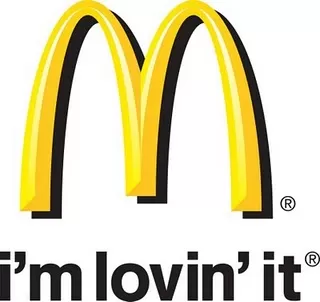
McDonald’s in India
Around the world, McDonald’s traditionally operates with local partners or local management. In India too, McDonald’s purchases from local suppliers. McDonald’s constructs its restaurants using local architects, contractors, labour and – where possible — local materials. McDonald’s hires local personnel for all positions within the restaurants and contributes a portion of its success to communities in the form of municipal taxes and reinvestment.
McDonald’s worldwide is well known for the high degree of respect to the local culture. McDonald’s has developed a menu especially for India with vegetarian selections to suit Indian tasted and culture. Keeping in line with this McDonald’s does not offer any beef and pork items in India. McDonald’s has also re-engineered its operations to address the special requirements ofa vegetarian menu. The cheese and cold sauces used in India is 100% vegetarian. Vegetable products are prepared separately, using dedicated equipment and utensils. Also in India, only vegetable oil is used as a cooking medium. This separation of vegetarian and non-vegetarian food products is maintained throughout the various stages of procurement, cooking and serving.
The McDonald’s philosophy of Quality, Service, Cleanliness and Value (QSC&V) is the guiding force behind its service to the customers. McDonald’s India serves only the highest quality products. All McDonald’s suppliers adhere to Indian Government regulations on food, health and hygiene while continuously maintaining their own recognized standards. All McDonald’s products are prepared using the most current state-of-the-art cooking equipment to ensure quality and safety. At McDonald’s, the customer always comes first. McDonald’s India provides fast friendly service- the hallmark of McDonald’s that sets its restaurants apart from others. McDonald’s restaurants provide a clean, comfortable environment especially suited for families. This is achieved through McDonald’s stringent cleaning standards, carefully adhered to McDonald’s menu is priced at a value that the largest segment of the Indian consumers can afford. McDonald’s does not sacrifice quality for value — rather McDonald’s leverages economies to minimize costs while maximizing value to customers. The company has invested Rs 450 crore so far in its India operations out of its total planned investment of Rs 850 crore till 2007.
Business Model
- Franchise Model — Only 15% of the total number of restaurants are owned by the Company. The remaining 85% is operated by franchisees. The company follows a comprehensive framework of training and monitoring of its franchises to ensure that they adhere to the Quality, Service, Cleanliness and Value propositions offered by the company to its customers.
- Product Consistency — By developing a sophisticated supplier networked operation and distribution system, the company has been able to achieve consistent product taste and quality across geographies.
- Act like a retailer and think like a brand — McDonald’s focuses not only on delivering sales for the immediate present, but also protecting its long term brand reputation.
Challenges in Entering Indian Markets
- Regiocentricism: Re-engineering the menu – McDonald’s has continually adapted to the customer’s tastes, value systems, lifestyle, language and perception. Globally McDonald’s was known for its hamburgers, beef and pork burgers. Most Indians are barred by religion not to consume beef or pork. To survive, the company had to be responsive to the Indian sensitivities. So McDonald’s came up with chicken, lamb and fish burgers to suite the Indian palate.
- The vegetarian customer — India has a huge population of vegetarians. To cater to this customer segment, the company came up with a completely new line of vegetarian items like Mc Veggie burger and Mc Aloo Tikki. The separation of vegetarian and non-vegetarian sections is maintained throughout the various stages.
“Mc Donald’s mein hai kuch baat” projects McDonald’s as a place for the whole family to enjoy. When McDonald’s entered in India it was mainly perceived as targeting the urban upper class people. Today it positions itself as an affordable place to eat without compromising on the quality of food, service and hygiene. The outlet ambience and mild background music highlight the comfort that McDonald’s promises in slogans like “You deserve a Break Today” & “Feed your inner child”. This commitment of quality of food and service in a clean, hygienic and relaxing atmosphere has ensured that McDonald’s maintains a positive relationship with the customers.
Source: Docstoc.com
Related posts:
- Case Study of McDonalds: Advertising and Promotion Strategies
- Case Study: McDonalds Marketing Strategies
- Case Study of McDonalds: Strategy Formulation in a Declining Business
- Case Study: L’Oreal Marketing Strategies in India
- Case Study: Advertising Strategies of The Times of India
- Case Study on MNC’s Marketing Strategies: In India, it’s a Brand New Way
- Case Study on Apple’s Business Strategies
- Case Study: Walt Disney’s Business Strategies
- Case Study on Business Strategies: Kodak’s Transition to Digital
- Case Study on Business Strategies: The Downfall of Sun Microsystems
Leave a Reply Cancel reply
Your email address will not be published. Required fields are marked *
McDonald’s Case Study Problem Statement: Improper Resource Management
- To find inspiration for your paper and overcome writer’s block
- As a source of information (ensure proper referencing)
- As a template for you assignment
McDonald’s Statement of the Problem or Opportunity
Mcdonald’s problem statement: alternatives, mcdonald’s problem: analysis of the alternatives, recommendation, works cited.
There is lack of proper management of resources within McDonald restaurants and this has led to tremendous drop in sales over the years. Most of the stores in the Far East have closed due to economic downturn. At the same time consumers are shifting their tastes and preferences from hamburgers to other types of food. This has contributed to low sales since the number of people visiting the stores decreased over the years.
The number of prospective franchisees has also decreased attributing their exit to poor customer turnout owing to cheap brand that McDonald has exposed itself to by offering too much discounts on its products. The firm is also experiencing poor quality services and uncleanliness; this is due to laxity by the top management making them not to inspect the franchises. There is also lack of skilled manpower due to postponement of training sessions that were once used to equip employees.
The company need to work out on their business models through appropriate segmentation to enable them work comfortably with the changing market economy. Professional training of the employees on the marketing and sales strategies needs to be resumed. The firm at the same time need to diversify its sales in order to catch up with the consumers changing trends on tastes.
These other food products must be accompanied by quality services including reasonable prices. McDonalds should also improve on the quality of their burgers by inventing new and unique recipe. This can only be achieved by utilizing the most creative franchisees having high skilled employees (McDonald et al 335-352).
There is need to recruit managers who are capable of implementing the firms marketing programs and at the same time have the ability of building internal cohesion (Johlke and Duhan 265-267). The manager must have the ability to motivate and unite employees from the franchises to the head office.
The managers must possess the ability to control and cope with major changes and challenges within the market. The managers need to acquire valuable information on the current market trends without relying so much on their past performances. They need to improve on their level of interaction and communication with their franchisee.
Making training mandatory for every employee on a regular basis might see an improvement in the level of skilled manpower. This can be used to enhance marketing effectiveness as well as the level of performance. Recruiting experienced managers will ensure that proper tactics are implemented to regain the control of the market.
This will also ensure that the human resource have the right people for right duties (Cravens and Piercy 2009). McDonalds have kept on changing its managers due to poor performances and inability to implement quality strategies for quality services. Like in this case, poor management led to McDonalds closing over seven hundred restaurants (Gogoi and Michael 281-284).
Looking for the alternative food stuff for consumers might not look effective at the start since there are many consumers who are now used to the supplies from other potential competitors. Improving the recipe will not also realize much change because according to research ratings, the consumers prefer being served with firms that offer better quality services.
According to the research carried out, companies like Wendy and Chick-fill-A Inc were ranked a head of McDonald. McDonald’s competitors offer far better quality food stuff than them and this might mean that McDonald will really have to improve on their sales and marketing tactics in order to convince consumers (Kohli 53-8).
There is need to analyze other competitors intentions and strategies in order to find the best counteractive approach. The need for good management team will enhance the provision of good brand and articulation of all the elements that comprise marketing mix. The products, pricing and the way of marketing must change for growth and improvement to be realised.
Cravens, David and Piercy, Nigel. “Strategic Marketing”. McGraw Hill. 9 th edition. 2009.
Gogoi, Pallovi and Michael, Arndt. “McDonald’s Corporation”. Business week , New York, (2003): 281-284.
Johlke, Mark and Dale Duhan. “Testing Competing Models of Sales Force Communication”. Journal of Personal Selling & Sales Management . USA Vol. 21 (4), (2000): 265-277.
Kohli, Jaworski. “Market orientation: Antecedents and consequences”. Journal of Marketing; New York 57, (3) (1993): 53-81.
McDonald, Malcolm et al. “Corporate Marketing and Service Brands—Moving Beyond the Fast-Moving Consumer Goods Model.” European Journal of Marketing ; London. Vol. 35 (3/4), (2001):335-352.
- Strategies and Policies at the Apple, Inc.
- Dell Inc.'s Human Resource Management Problems
- Chick Corea's "Spain" Jazz Song
- Forever Yogurt Shops' Franchisees
- Turkey Cooking: Festive Recipe
- Evaluation of the MMM Website
- Advantages and Disadvantages of Types in Organization Business Forms
- Outsourcing: Reducing Cost Without Sacrificing Growth
- Satellite Digital Audio Radio Service’s Efficient Communication
- Companies That Use Expectancy Theory: SAS Motivation
- Chicago (A-D)
- Chicago (N-B)
IvyPanda. (2018, July 8). McDonald's Case Study Problem Statement: Improper Resource Management. https://ivypanda.com/essays/mcdonalds-case-study/
"McDonald's Case Study Problem Statement: Improper Resource Management." IvyPanda , 8 July 2018, ivypanda.com/essays/mcdonalds-case-study/.
IvyPanda . (2018) 'McDonald's Case Study Problem Statement: Improper Resource Management'. 8 July.
IvyPanda . 2018. "McDonald's Case Study Problem Statement: Improper Resource Management." July 8, 2018. https://ivypanda.com/essays/mcdonalds-case-study/.
1. IvyPanda . "McDonald's Case Study Problem Statement: Improper Resource Management." July 8, 2018. https://ivypanda.com/essays/mcdonalds-case-study/.
Bibliography
IvyPanda . "McDonald's Case Study Problem Statement: Improper Resource Management." July 8, 2018. https://ivypanda.com/essays/mcdonalds-case-study/.
- Kirov Tourism
- Kirov Hotels
- Bed and Breakfast Kirov
- Flights to Kirov
- Kirov Restaurants
- Kirov Attractions
- Kirov Travel Forum
- Kirov Photos
- All Kirov Hotels
- Kirov Hotel Deals
Travelling from Dublin to Kirov, Russia end of January 2011 - Kirov Forum
- Europe
- Russia
- Volga District
- Kirov Oblast
- Kirov
Travelling from Dublin to Kirov, Russia end of January 2011
- United Kingdom Forums
- United States Forums
- Europe Forums
- Canada Forums
- Asia Forums
- Central America Forums
- Africa Forums
- Caribbean Forums
- Mexico Forums
- South Pacific Forums
- South America Forums
- Middle East Forums
- Honeymoons and Romance
- Business Travel
- Train Travel
- Traveling With Disabilities
- Tripadvisor Support
- Solo Travel
- Bargain Travel
- Timeshares / Holiday Rentals
- Kirov Oblast forums
- Kirov forum

2 replies to this topic

I'm going to Riga/Novgorod/St Petersburg at the end of January for a week - meant to be the coldest winter ever in Russia this january!

Zhastlivovo Putiy,
Puteshestvennik2010
- Travelling from Dublin to Kirov, Russia end of January 2011 21 January 2011
- Travelling via Moscow to Kirov 26 July 2010
- internet cafe 23 March 2010
- GreenLeaders
- Kirov Tourism
- Kirov Hotels
- Kirov Bed and Breakfast
- Flights to Kirov
- Kirov Restaurants
- Things to Do in Kirov
- Kirov Travel Forum
- Kirov Photos
- All Kirov Hotels
- Kirov Hotel Deals
- Kirov Motels
- Kirov Hostels
- Kirov Business Hotels
- Kirov Family Hotels
- Romantic Hotels in Kirov
- Kirov Spa Resorts
- 5-stars Hotels in Kirov
- 4-stars Hotels in Kirov
- 3-stars Hotels in Kirov
- Kirov Hotels with Free Parking
- Kirov Hotels with Pools
- Pet Friendly Hotels in Kirov
- Kirov Hotels with Air Conditioning
- Kirov Shopping Hotels
- Kirov Hotels with a View
- Kirov Non-Smoking Hotels
- Kirov Hotels with Concierge
- Kirov Hotels with Laundry Facilities
- Kirov Hotels with Gym
- Kirov Hotels with Steam Room
- Kirov Hotels with Soundproof rooms
- Kirov Hotels with Bridal Suite
- Hotels near Alexander Garden
- Hotels near Spasskaya Street
- Hotels near Pond near Diorama
- Hotels near Chocolate History Museum "Criollo"
- Hotels near Holy Uspensky Trifonov Monastery
- Hotels near Vyatka Museum of Paleontology
- Hotels near Theatre Square
- Hotels near Museum of History of Ice Cream
- Hotels near Dymkovskaya Toy Museum
- Hotels near The Vyatka Art Museum named after Viktor and Apollinary Vasnetsov
- Hotels near Botanical Garden
- Hotels near Monument Family
- Hotels near Kirov Railway Station
- Hotels near Dendrologic Park
- All Kirov Restaurants
- Best Waffles & Crepes in Kirov
- Best Ice Cream in Kirov
- Best Juice & Smoothies in Kirov
- Restaurants near Elements Kirov Hotel
- Restaurants near Stariy Dvorik on Mopra
- Restaurants near Hotel Charushin
- Restaurants near Stary Dvorik na Orlovskoi
- Restaurants near Postoyaly Dvor
- Restaurants near Alpha
- Restaurants near Sputnik Hotel
- Restaurants near Bliss Hotel
- Restaurants near Vyatka Hotel
- Restaurants near Hotel Classic
- Restaurants near Spasskaya Street
- Restaurants near Vyatka Museum of Paleontology
- Restaurants near Chocolate History Museum "Criollo"
- Restaurants near Monument Family
- Restaurants near The Vyatka Art Museum named after Viktor and Apollinary Vasnetsov
- Restaurants near Escape from the Room
- Restaurants near Theatre Square
- Restaurants near Museum of History of Ice Cream
- Restaurants near Embankment of Grin
- Restaurants near House of Merchant Bulychev
- Restaurants near Kirov Airport
- Restaurants near Kirov Railway Station
- Restaurants near 44 Km Station
- Restaurants near 50 Km Station
- Restaurants near Chuhlominski Station
- Restaurants near Dolgushino Station
- Restaurants near Girsovo Station
- Restaurants near Kirov-Kotlasski Station
- Restaurants near Lyangasovo Station
- Restaurants near Matantsy Station
- Restaurants near Medyanka Station
- Things to Do
- Restaurants
- Vacation Rentals
- Travel Stories
- Rental Cars
- Add a Place
- Travel Forum
- Travelers' Choice
- Help Center
THE 10 BEST Restaurants Near Old Vyatka River Bridge
- Europe
- Russia
- Volga District
- Kirov Oblast
- Kirov
- Kirov Restaurants
Book NOW for our 2024 HSC Eco and Business Student Day

Business Case Study 2025
The McDonald's Business Case Study 2025 Edition is an in-depth look at how McDonald's successfully operate more than 42 000 stores globally.
"The McDonalds case study book was an instrumental aspect of my success in the Business Studies HSC" - Grace Losco - equal first, 2023 Business Studies HSC
Click here to see how Grace used the book
The book is full colour, easy to read, up-to-date and will help students gain a greater understanding of how business theories are used by a real business in the real world. The 2025 edition comes with access to the "Macca's Hub", a curated set of videos and other media explicitly referenced in the book.
Click here to see how a Top 5 student from 2022 used this book.
Comments from teachers.
It’s current and very relevant especially in marketing I don’t know a student that has no experience of Maccas!
It's completely comprehensive and straightforward for students to understand. The syllabus structure allows a direct connection to what they are studying and need to be able to apply the case study to.
It is well written and gives students of all abilities access.
Students can relate to it - makes sense to them and there are several examples that are relevant to our syllabus.
The students work at Maccas so can readily relate to it. It is also readable, not too wordy, and an easy to handle book that is pretty robust.
I love how it is aligned with syllabus outcomes, it is easy to access and understand. It is excellent how it is updated each year with new and improved information. It is relatable for students - it has more of a local focus, unlike the other commercially produced case studies which tend to be loftier and more globalised and political.
A lot of my students work there so it is accessible and relevant.
The case study connects to all syllabus dot points and includes up to date statistics and images. Students can relate to the level that it is pitched at and it also incorporates terminology.
It's relatable to the students. Many of the kids work at Maccas, they have all been in a store, so its easier for them to remember details. The book links their 'working knowledge' to the theory.
The Maccas Case study is accessible to all students regardless of academic ability, social economic status or location because it is easy for them to connect with the business examples given.
Its related directly to the syllabus headings and dot points. It is written at the level suitable for Yr 12 students. Colourful and set out really well. As a lot of students work or have worked at McDonalds they are able to relate well to the information provided.
Easy to understand for the students. Students are engaged better with this case study as many actually work for the Maccas. Visuals and engagement with the syllabus assist students clearly understand the link between business and course work.
It's very user friendly, the images make great discussion points in the classroom. A lot of students can easily connect with the content. It follows the stupid syllabus well.
Very useful - lots of information that students can relate to and use in their studies .
CHECK OUT MORE BOOKS


- Visit Our Blog about Russia to know more about Russian sights, history
- Check out our Russian cities and regions guides
- Follow us on Twitter and Facebook to better understand Russia
- Info about getting Russian visa , the main airports , how to rent an apartment
- Our Expert answers your questions about Russia, some tips about sending flowers

Russian regions
- Bashkortostan republic
- Chuvashia republic
- Kirov oblast
- Mari El republic
- Mordovia republic
- Nizhegorodskaya oblast
- Orenburg oblast
- Penza oblast
- Samara oblast
- Saratov oblast
- Tatarstan republic
- Udmurt republic
- Ulyanovsk oblast
- Map of Russia
- All cities and regions
- Blog about Russia
- News from Russia
- How to get a visa
- Flights to Russia
- Russian hotels
- Renting apartments
- Russian currency
- FIFA World Cup 2018
- Submit an article
- Flowers to Russia
- Ask our Expert
Kirov Oblast, Russia
The capital city of Kirov oblast: Kirov .
Kirov Oblast - Overview
Kirov Oblast is a federal subject of Russia located in the central-eastern part of European Russia, part of the Volga Federal District. Kirov (former Vyatka) is the capital city of the region.
The population of Kirov Oblast is about 1,235,000 (2022), the area - 120,374 sq. km.
Kirov oblast flag
Kirov oblast coat of arms.
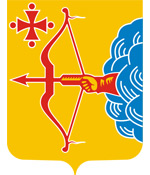
Kirov oblast map, Russia
History of kirov oblast.
Vyatka land was inhabited in ancient times (about 50-15 thousand years ago). In the second half of the 1st century AD, a number of Udmurt, Mari, Komi tribes began to form in the region on the basis of the Finno-Ugric language community. Most of the area was covered with virgin forests and swamps. The main occupations of the population were agriculture, cattle-breeding and hunting.
At the end of the 12th - early 13th centuries, Russians began to settle in vacant land among the Udmurts and Mari. In the second half of the 13th century, Russian influx on Vyatka increased in connection with the Mongol-Tatar invasion.
Vyatka was first mentioned in chronicles in 1374. In the 1370s, this region became part of the Nizhny Novgorod principality. In 1393, the principality was annexed to the Duchy of Moscow.
The favorable geographical position contributed to the development of productive forces, the growth of agriculture, industry and trade. In the 16th century, this land was on the first places on the intensity of settlement and economic development.
More historical facts…
At the end of the 16th century, the Siberian Khanate ceased to exist and Vyatka lost the status of the borderland. It became a link between the Central, Volga and the Ural-Siberian regions of the Russian state.
During the reign of Boris Godunov, during the Time of Troubles, Vyatka for the first time was used as a place of exile. In the middle of the 17th century, Khlynov, with the population of about 4,400 people, was the largest town in the north-east of European Russia.
In 1719, the Vyatka province was founded as part of the Siberian gubernia. In 1727, the province became part of the Kazan gubernia. In 1780, Vyatka governorship with the center in Khlynov was formed. On this occasion the town received a new name - Vyatka. In 1796, Vyatka governorship was transformed into a province.
In the 19th century, the province remained a place of political exile. In the 1830-1850s, a lot of the Poles, who took part in the uprising of 1830-1831, were exiled to Vyatka. In 1835-1837, Alexander Herzen lived in Vyatka, which had a profound impact on the local social and cultural life. In 1848-1855, M.E. Saltykov-Shchedrin was in exile here.
In 1934, Vyatka was renamed Kirov in honor of Sergei Kirov, a Russian revolutionary, Soviet statesman and political figure who was killed on December 1, 1934. During the Second World War, more than 600,000 residents of Kirov Oblast served in the Red Army, 257,900 of them were killed.
Beautiful nature of Kirov Oblast

Vyatka - the land of lakes and rivers
Author: Dmitriy Zonov

Cold taiga landscape in Kirov Oblast

Golden autumn in the Kirov region
Kirov Oblast - Features
Kirov Oblast is located in the north-east of the East European Plain (Russian Plain). It extends 570 km from north to south and 440 km from west to east and borders with nine other subjects of the Russian Federation; it is a record.
The distance from Kirov to Moscow is 956 km by roads. The Vyatka River is the main river of the region.
The climate is temperate continental. Winters are usually long and cold, summers are short and warm. The proximity to the Arctic Ocean leads to the possibility of invasion of cold air. Hence severe frosts in winter and sudden cooling in summer are common. The average temperature in January is about minus 13,5-15 degrees Celsius, in July - plus 17-19 degrees Celsius. Kirov oblast is situated in the taiga zone with rich flora and fauna.
The Day of Kirov Oblast is celebrated on the second Sunday of December. The largest cities and towns of the region are Kirov (523,500), Kirovo-Chepetsk (67,000), Slobodskoy (31,000), Vyatskie Polyany (31,000), Kotelnich (22,000), Omutninsk (21,000), Yaransk (15,000), and Sovetsk (14,800).
Railways cross the territory of the Kirov region connecting the central part of Russia with the Urals, Siberia and the Far East (the Trans-Siberian Railway), northern regions with southern ones (“Kirov-Kotlas”). The main waterway is the Vyatka River.
The basis of the resource potential of the region consists of forests (primarily coniferous), phosphorites, peat, furs. Forests cover more than half of the territory of Kirov Oblast. The total amount of forest resources is about 1.2 bln. cubic meters.
There are a lot of peat deposits and resources of non-metallic mineral raw: limestone, clays, sands, and gravel. The largest in Europe Vyatsko-Kamskoye deposit of phosphorites is located here. The region is also rich in mineral springs and healing mud.
The main industries of the local economy are machine building and metalworking, ferrous and non-ferrous metallurgy, chemical, microbiological, forest, woodworking, pulp and paper, light, food, and peat industries.
Livestock, mainly milk and meat production, is the basis of local agriculture. The main cultivated crops are grains, potatoes, flax, and vegetables.
Tourism in Kirov Oblast
Kirov Oblast has a variety of natural, historical and cultural attractions. Twelve ancient towns and villages have great potential for tourism: Kirov, Orlov, Urzhum, Malmyzh, Sovetsk, Kotelnich, Slobodskoy, Yaransk, Nolinsk, the villages of Velikoretskoye in Yuryansky district, Ryabovo in Zuyevo district and Lalsk in Luzsky district.
The region has more than 200 protected areas, the state nature reserve “Nurgush”, wildlife sanctuaries “Pizhemsky”, “Bylina”, “Bushkovsky forest”, 9 game reserves, 4 resort zones (Nizhne-Ivkino Vyatskie ridges, Mitino, Avitek), the world’s largest Kotelnich location of fossil vertebrates that lived 250 million years ago - pareiasaurs.
On the territory of Kirov Oblast there are about 3,500 monuments of archeology, history, urban planning, and architecture. There are more than 50 museums. Memorial museum are of greatest interest - the house-museums of V.M. Vasnetsov and A.M. Vasnetsov in the village of Ryabovo in Zuyevo district, M.E. Saltykov-Shchedrin in Kirov, I.S. Konev in the village of Lodeynoe in Podosinovsky district, John Rainis in Slobodskoy, A.S. Grin in Kirov, G.S. Shpagin in Vyatskiye Polyany.
Interesting exhibitions are presented in the Kirov Art Museum, Kotelnich Paleontological Museum, Slobodskoy Regional Museum, Museum of K.E. Tsiolkovsky in Kirov. In recent years, a large number of private museums appeared in the Kirov region: Museum of the history of Khlynov in Kirov, “The House of Hats” in Vyatskiye Polyany.
Kirov Oblast is also known for its traditional arts and crafts: Dymkovo painted clay toys, things made of straw, pine tree roots, wood, Kukarsky laces, items made of flax with traditional embroidery, ceramics.
This region is known to hunters all over the world. It produces about 30 types of game animals, including elk, wild boar, bear, wolf, hare, fox, beaver, marten, muskrat, otter, raccoon and badger, stoat. The hunting grounds area is about 11 million hectares.
Every year, Kirov Oblast is visited by about 20 thousand foreigners and more than 260 thousand tourists from other regions of Russia.
Interesting objects of cultural heritage outside the city of Kirov
- Architectural ensemble of the central square of the town of Slobodskoy with a magnificent bell tower built in honor of the victory in the Patriotic War of 1812,
- Michael the Archangel Gate Chapel of the Annunciation Monastery (Revolution Square in Slobodskoy),
- Architectural ensemble of Velikoretskoye, an ancient Vyatka village located on the picturesque banks of the Velikaya River,
- The house where Sergei Kirov was born in 1886 and lived until 1895 (Urzhum, Kirova Street, 72),
- Church of St. Nicholas of Myra (Nizhny village in Oparinsky district),
- Cathedral ensemble in the village of Lalsk in Luzsky district.
Kirov oblast of Russia photos
Pictures of kirov oblast.
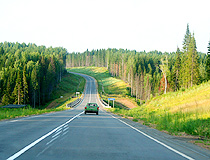
Road through the forest in the Kirov region
Author: Alexander Dolnik
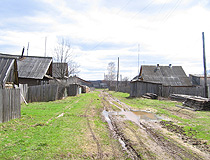
Village life in Kirov Oblast
Author: Nadezhda Danilova

Abandoned church in Kirov Oblast
Author: Roman Sozyn
Churches of Kirov Oblast

Wooden church in Kirov Oblast
Author: Nadezda Shklyaeva

Restoration of cultural heritage in the Kirov region

Magnificent cathedral in Kirov Oblast
Author: Dmitriy Tkachenko
The questions of our visitors
All 6 questions
The comments of our visitors
- Currently 2.83/5
Rating: 2.8 /5 (192 votes cast)
Adaptability Assessment of Spring Chaffy Oats for Yield and Grain Quality under the Environmental Conditions of Kirov Oblast
- PLANT BREEDING, PLANT PROTECTION, AND BIOTECHNOLOGY
- Published: 26 December 2023
- Volume 49 , pages 461–466, ( 2023 )
Cite this article

- E. N. Vologzhanina 1 &
- G. A. Batalova 1
15 Accesses
Explore all metrics
The work was carried out with the aim of evaluating the varieties and lines of spring oats for their ability to give stable high-quality grain yields in Kirov oblast and to identify promising highly adaptive genotypes that fully realize their yield potential under changing environmental conditions. The material for the study was 11 varieties and promising lines. The Krechet variety included in the State Register was used as a standard. The experiments were carried out in 2020–2022. The closest to the optimal conditions for the growth and development of oats were seen in 2020 and 2022, when the duration of the period from sprouting to heading of panicles averaged 46 and 52 days, and the average yield was 6.18 and 6.21 t/ha, respectively. The highest yields were shown by the promising lines 91h18 (6.14 t/ha) and 41h18 (5.78 t/ha), which exceeded the Krechet standard by 0.95 and 0.59 t/ha, respectively. The line 91h18 also showed high levels of plasticity ( b i = 1.13) and stability ( \(S_{i}^{2}\) = 0.00) for the yield trait. Sufficiently high plasticity and stability for yield ( b i = 1.12 and \(S_{i}^{2}\) = 0.01) and grain quality indices ( b i = 1.12 and \(S_{i}^{2}\) = 0.20 for protein content and b i = 1.11 and \(S_{i}^{2}\) = 0.00 for fat content) was demonstrated by the intensive type Medved’ variety. High plasticity ( b i = 1.42) and stability ( \(S_{i}^{2}\) = 0.00) for the grain protein content trait were observed in the line 162h15. The highest fat content in grain (5.3–5.6%) was demonstrated by the lines 178h13, 4h14, and 41h18. Almost every studied variety and line showed high stability for this trait ( \(S_{i}^{2}\) = 0.00–0.21). A decrease in the grain quality indices was observed with increasing plasticity and stability for yield along with a highly significant negative relationship between protein content in grain and yield ( r = –0.83). A highly significant positive relationship between the length of the sprouting–heading of panicle period and HTC ( r = 0.97) and yield ( r = 0.79) was found.
This is a preview of subscription content, log in via an institution to check access.
Access this article
Subscribe and save.
- Get 10 units per month
- Download Article/Chapter or eBook
- 1 Unit = 1 Article or 1 Chapter
- Cancel anytime
Price includes VAT (Russian Federation)
Instant access to the full article PDF.
Rent this article via DeepDyve
Institutional subscriptions
Yusova, O.A., Nikolaev, P.N., Safonova, I.V., et al., Changes in oat grain yield and quality with increased adaptability of cultivars, Tr. Prikl. Bot., Genet. Sel ., 2020, vol. 181, no. 2, pp. 42–49. https://doi.org/10.31367/2079-8725-2021-74-2-75-80
Article Google Scholar
Fomina, M.N., Ivanova, Yu.S., Pai, O.A., et al., “Tobolyak”: an oat cultivar for universal use, Tr. Prikl. Bot., Genet. Sel ., 2021, vol. 182, no. 2, pp. 107–113. https://doi.org/10.30901/2227-8834-2021-2-107-113
Fomina, M.N. and Bragin, N.A., Use of technology elements for the implementation of the biological resource in new generation oat varieties in the northern foreststeppe zone of the Tyumen region, Dostizh. Nauki Tekh. APK , 2020, vol. 34, no. 3, pp. 22–25. https://doi.org/10.24411/0235-2451-2020-10304
Bezdogov, A.V. and Yalunina, A.D., The productivity and reaction of naked oat breeds on weather conditions in the Middle Urals, Interaktivnaya Nauka , 2016, no. 10, pp. 94–101. https://doi.org/10.21661/r-114765
Vlasov, A.G., Khaletskii, S.P., and Bulavina, T.M., Adaptivnye svoistva i osobennosti formirovaniya urozhainosti sortov ovsa belorusskoi selektsii, Vestn. Marii. Gos. Univ., Ser.: S-kh. Nauki, Ekon. Nauki , 2020, vol. 10, no. 4, pp. 397–405. https://doi.org/10.30914/2411-9687-2020-6-4-397-404
Polonskii, V.I., Gerasimov, S.A., Sumina, A.V., et al., Adaptive potential of oat accessions in the context of their chemical and physical grain characteristics, Tr. Prikl. Bot., Genet. Sel ., 2022, vol. 183, no. 1, pp. 57–75. https://doi.org/10.30901/2227-8834-2022-1-57-75
Kardashina, V.E. and Nikolaeva, L.S., Agroecological assessment of varieties and promising lines of oats for universal use, Dostizh. Nauki Tekh. APK , 2020, vol. 34, no. 5, pp. 56–60. https://doi.org/10.24411/0235-2451-2020-10511
Tulyakova, M.V., Batalova, G.A., Loskutov, I.G., et al., Assessment of adaptability parameters in hulled oat germplasm accessions in terms of their yield in the environments of Kirov Province, Tr. Prikl. Bot., Genet. Sel ., 2021, vol. 182, no. 1, pp. 72–79. https://doi.org/10.30901/2227-8834-2021-1-72-79
Alabushev, A.V., Makarova, T.S., Samofalova, N.E., et al., Parameters of adaptability and stability of winter durum wheat varieties according to various forecrops in the Rostov region, Agrar. Nauka Evro-Sev.-Vostoka , 2019, vol. 20, no. 6, pp. 557–566. https://doi.org/10.30766/2072-9081.2019.20.6.557-566
Pakudin, V.Z. and Lopatina, L.M., Assessment of ecological plasticity and stability of agricultural crops, S‑kh. Biol ., 1984, no. 4, pp. 109–113.
Plokhinskii, N.A., Biometriya (Biometry) , Novosibirsk: Sib. Otd. Akad. Nauk SSR, 1961.
Google Scholar
Selyaninov, G.T., On agricultural climate assessment, Tr. S-kh. Meteorol ., 1928, no. 20, pp. 165–177.
Khangil'din, V.V., On the principles of modeling intensive varieties, in Genetika kolichestvennykh priznakov sel’skokhozyaistvennykh rastenii (The Genetics of Quantitative Characters of Crops), Moscow: Nauka, 1978, pp. 111–116.
Batalova, G.A., Shevchenko, S.N., Lisitsyn, E.M., et al., Methodology of breeding ecologically resistant varieties of oats, Russ. Agric. Sci ., 2018, vol. 44, no. 1, pp. 3–6. https://doi.org/10.3103/S1068367418010068
Batalova, G.A., Oves v Volgo-Vyatskom regione (Oats in the Volga-Vyatka Region), Kirov: Orma, 2013.
Vologzhanina, E.N. and Batalova, G.A., New promising varieties and lines of chaffy and naked oats for mowing and universal use, Ross. S-kh. Nauka , 2022, no. 4, pp. 3–7. https://doi.org/10.31857/S2500262722040019
Download references
This work was supported by ongoing institutional funding. No additional grants to carry out or direct this particular research were obtained.
Author information
Authors and affiliations.
Rudnitskii Federal Agricultural Research Center of the Northeast, 610007, Kirov, Russia
E. N. Vologzhanina & G. A. Batalova
You can also search for this author in PubMed Google Scholar
Corresponding author
Correspondence to E. N. Vologzhanina .
Ethics declarations
Ethics approval and consent to participate.
This work does not contain any studies involving human and animal subjects.
CONFLICT OF INTEREST
The authors declare that they have no conflicts of interest.
Additional information
Translated by E. Martynova
Publisher’s Note.
Allerton Press remains neutral with regard to jurisdictional claims in published maps and institutional affiliations.
About this article
Vologzhanina, E.N., Batalova, G.A. Adaptability Assessment of Spring Chaffy Oats for Yield and Grain Quality under the Environmental Conditions of Kirov Oblast. Russ. Agricult. Sci. 49 , 461–466 (2023). https://doi.org/10.3103/S1068367423050166
Download citation
Received : 26 May 2023
Revised : 21 June 2023
Accepted : 08 August 2023
Published : 26 December 2023
Issue Date : October 2023
DOI : https://doi.org/10.3103/S1068367423050166
Share this article
Anyone you share the following link with will be able to read this content:
Sorry, a shareable link is not currently available for this article.
Provided by the Springer Nature SharedIt content-sharing initiative
- oat ( Avena sativa L.)
- growing season
- growing conditions
- Find a journal
- Publish with us
- Track your research

IMAGES
COMMENTS
Business Case Study 2024. The McDonald's Business Case Study 2024 Edition is an in-depth look at how McDonald's successfully operate more than 40 000 stores globally. "The McDonalds case study book was an instrumental aspect of my success in the Business Studies HSC" - Grace Losco - equal first, 2023 Business Studies HSC.
CASE STUDY: McDonald's. → McDonalds has 37,000 restaurants in 120 countries. → in 2018, McDonald's ranked 11th on Forbes list of most valuable brands. → 2017 report showed US$91billion in sales, showing success in maintaining competitive advantage by adapting to global conditions. Supply chain management → managing the flows of ...
The connection between globalization and McDonald's is a tale of scholarly metonymy. There's no textual shortage of evidence that references the now-global fast food chain's success in other countries, often linking it to themes of self-sufficiency, post-industrial stability, and democracy-formed capitalism.. Among these chunks of research is a more endogenous angle that examines the ...
KFC has 4,600. "McDonald's is facing more pressure from fast-casual restaurants and Chinese quick-service chains as consumers look at alternatives that they increasingly view as more healthful ...
ABSTRACT. The case study examines strategies for globalization employed by McDonaldꞌs, the iconic fast-food chain, and its dominance in the global fast-food industry. McDonald's has effectively leveraged its standardized menu, innovative marketing campaigns, and adaptive business model to establish a strong presence in over 100 countries.
The Solution. Dig Insights and McDonald's partnered on a multi-phase consumer insight engagement to: Understand the QSR landscape in chicken. Assess McDonald's global brand in chicken. Identify the optimal McDonald's menu that includes chicken innovation. Focusing just on this third stage of identifying the optimal McDonald's menu that ...
Abstract. McDonald's has over many years built an operating strategy based on consistency and quality through a limited product range. Competitive forces have drawn the company into a much wider variety of foods and services in order to maintain growth. Now, new competitors threaten to beat McDonald's at its own, original game.
The Kellogg Company was founded in 1940. McDonald's and its franchise partners employ more than 200,000 people globally. McDonald's reported $8.1 billion in sales by corporate-owned restaurants and $10.7 billion by franchise partners. The gross profit in 2020 was $4.7 billion.
Following the introduction of McHire, 1,450 McDonald's restaurants in the UK and Ireland have seen: Time-to-hire reduced by nearly 65%. A 20% increase in the number of candidates completing the process compared to the previous system. 85.9% of surveyed candidates rated their experience as four out of five or five out of five.
McDonald's website. McDonald's the world's leading food service retailer has more than 33,000 restaurants serving nearly 68 million people in more than 119 countries every day. Glocalization, a newer term used to show the localization of corporations globally, is getting popular due to a variety of reasons. The restaurant industry has been
Book NOW for our 2024 HSC Eco and Business Student Day
McDonald's Corporation is an American fast-food organization established in 1940 as a café by Richard and Maurice McDonald, in San Bernardino, California, United States. They rechristened their business as a burger stand and later transformed the organization into an establishment; the Golden Arches logo being presented in 1953 at an area in ...
McDonald's is the world's second-largest private manager, according to two 2018 reports, with 1.7 million representatives (behind Walmart with 2.3 million workers). McDonald's History. In ...
CASE STUDY: McDonald's → Mcdonald9s invested in a global training program (Hamburger University) to ensure efficiency and reduce overall costs goods and/or services in different industries. Goods/Services Differentiation Standardisation → making products that are all the same. Product Differentiation → distinguishing products
Regarding concentration, McDonald's sells close to 50% of the hamburgers provided in the fast-food market (Blackwell, Engel, and Talarzyk 1984, p. 115). Along the profit dimension, McDonald's Corporation is expected to have an excess cash flow of $1 billion by the year 1990 (Business Week 1984, p. 46). The firm.
As a result, these firms' improved performance in the industry has negatively affected McDonald's market share (Jargon, 2014, p. 1). McDonald's poor competitive position can be seen through its declining sales and profit revenues in the past six months. This paper is going to discuss the main marketing issues that McDonald's faces in ...
McDonald's The modest beginnings of McDonald's at Illinois in USA, turned out to be among the main brand names in the international scene. It has been synonymous to what is widely-accepted the fast-food concept. The company operates over thirty one thousand stores all over the world to date. It was one of the first to perfect the concept of fast service in the food industry in its early ...
Get a custom case study on McDonald's Case Study Problem Statement: Improper Resource Management. The number of prospective franchisees has also decreased attributing their exit to poor customer turnout owing to cheap brand that McDonald has exposed itself to by offering too much discounts on its products.
Log in to get trip updates and message other travellers.. Kirov
Restaurants near Old Vyatka River Bridge, Kirov on Tripadvisor: Find traveler reviews and candid photos of dining near Old Vyatka River Bridge in Kirov, Kirov Oblast.
The McDonald's Business Case Study 2025 Edition is an in-depth look at how McDonald's successfully operate more than 42 000 stores globally. "The McDonalds case study book was an instrumental aspect of my success in the Business Studies HSC" - Grace Losco - equal first, 2023 Business Studies HSC. Click here to see how Grace used the book.
Kirov Oblast is a federal subject of Russia located in the central-eastern part of European Russia, part of the Volga Federal District. Kirov (former Vyatka) is the capital city of the region. The population of Kirov Oblast is about 1,235,000 (2022), the area - 120,374 sq. km.
Both environmental conditions and genotype impact yield formation and grain quality in oats. Kirov oblast is a risk farming area because of the unstable frequently changing weather conditions during the period of growth and development of grain crops [].In the years when the present study was carried out, the weather conditions were contrasting, which affected the vegetation period length and ...